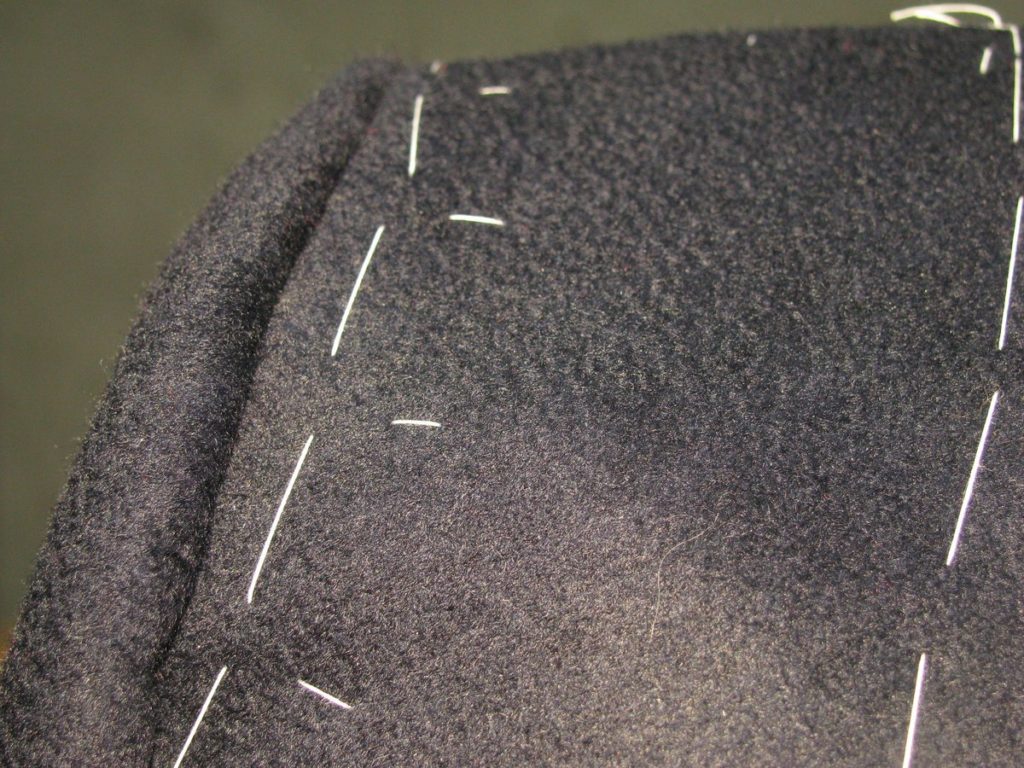Month: February 2020
Overcasting
Finally, the last of the preliminary work is to overcast the raw edges around the entirety of each trouser leg (if you have not used the pinking method). This can take a while, but it’s pretty mindless work so I usually put on a movie or podcast while I’m working.
There are certain sections you don’t have to overcast, such as the top edge where the waistband will be, as well as the section that will be covered by the pocket on the front leg (the first 10 inches or so).
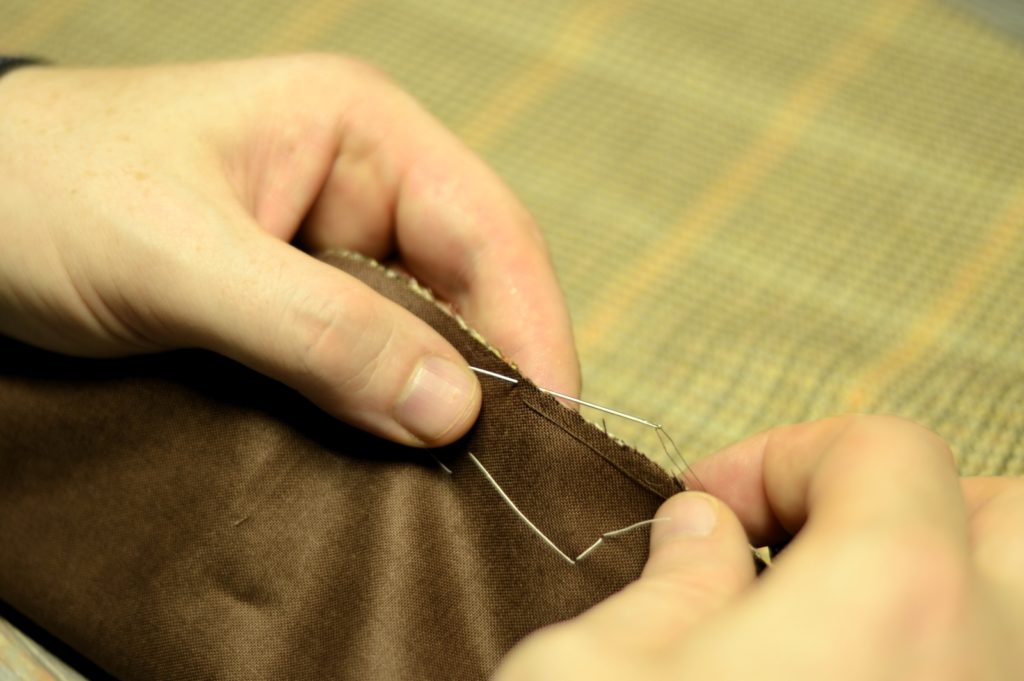
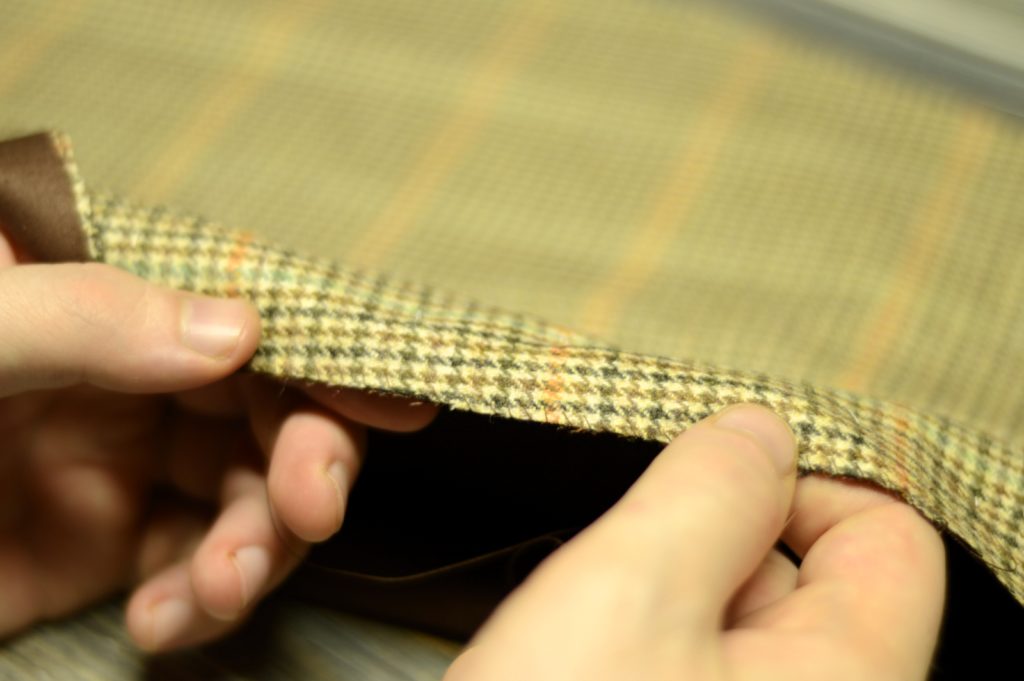
The Buttons
Mark the button placement on the right side of the coat. I like to do this by laying the right side on to the left so that the buttonholes are just visible. Then I simply mark the corresponding spot on the row of stitching.
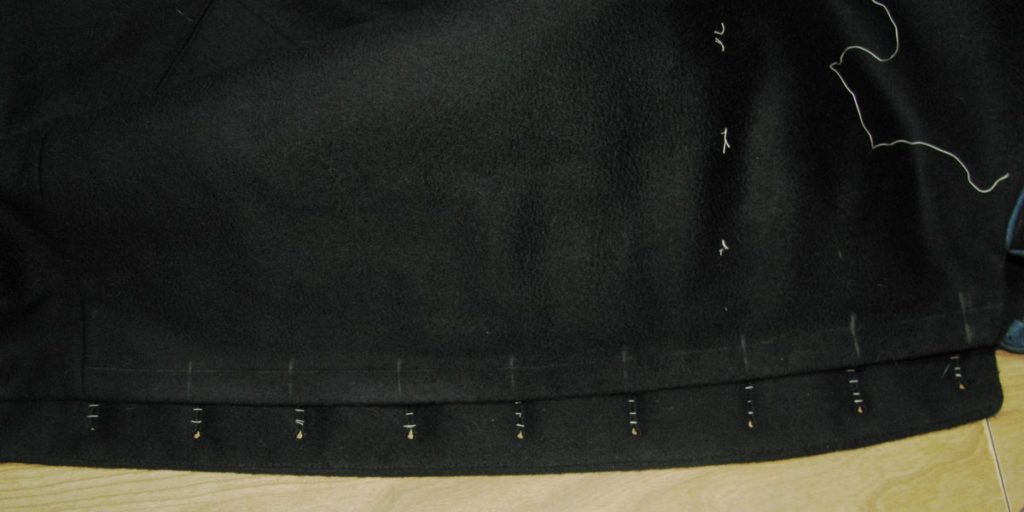
Beginning with the waist seam button, sew the button on as you did for the rear buttons earlier. I like to go six times through the shank, then wrap that four times around. Starting from the bottom button ensures that the thread does not get caught on the previous button as you sew.
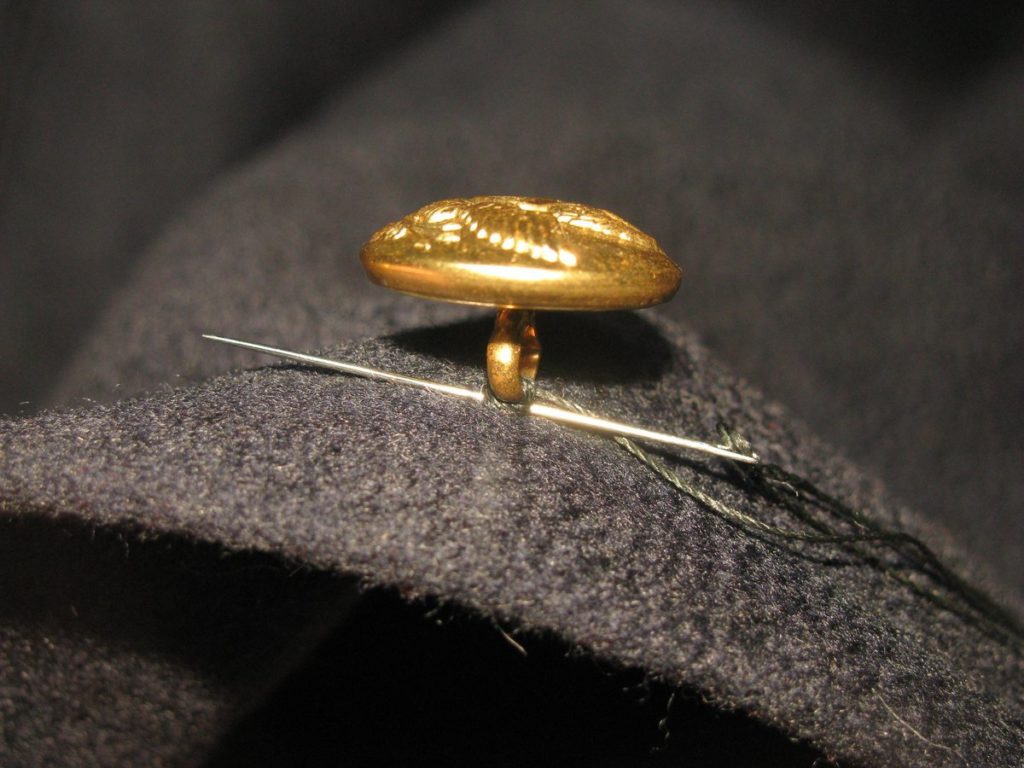
On the cuffs, mark the buttonhole location, about 1⁄2 inch from the edge and aligned with the buttonholes. Sew on the smaller cuff buttons here. This will show through the lining, on the upper button.
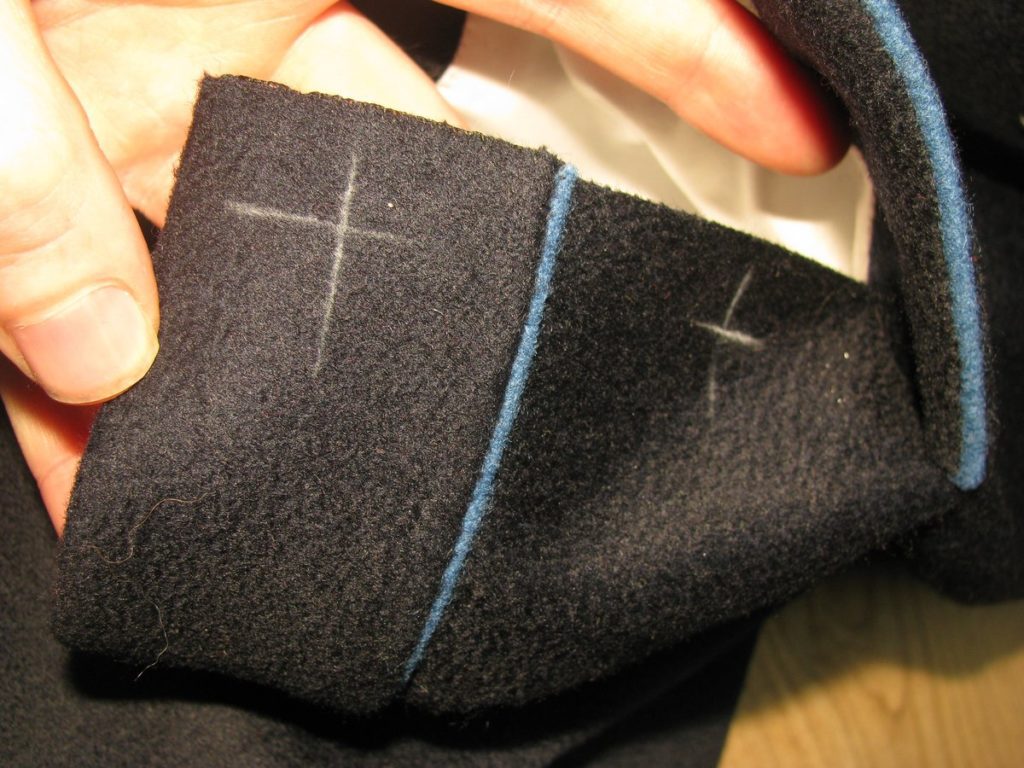
At this point, you can remove any basting stitches that are left in the coat.
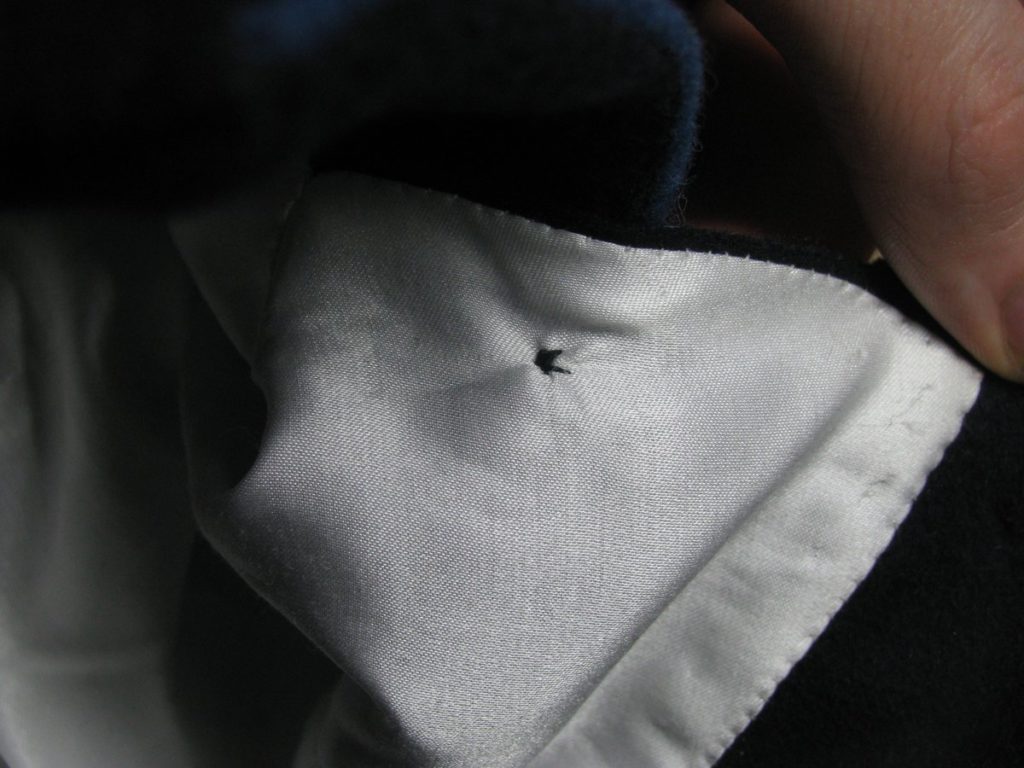
Congratulations, the coat is completely finished!
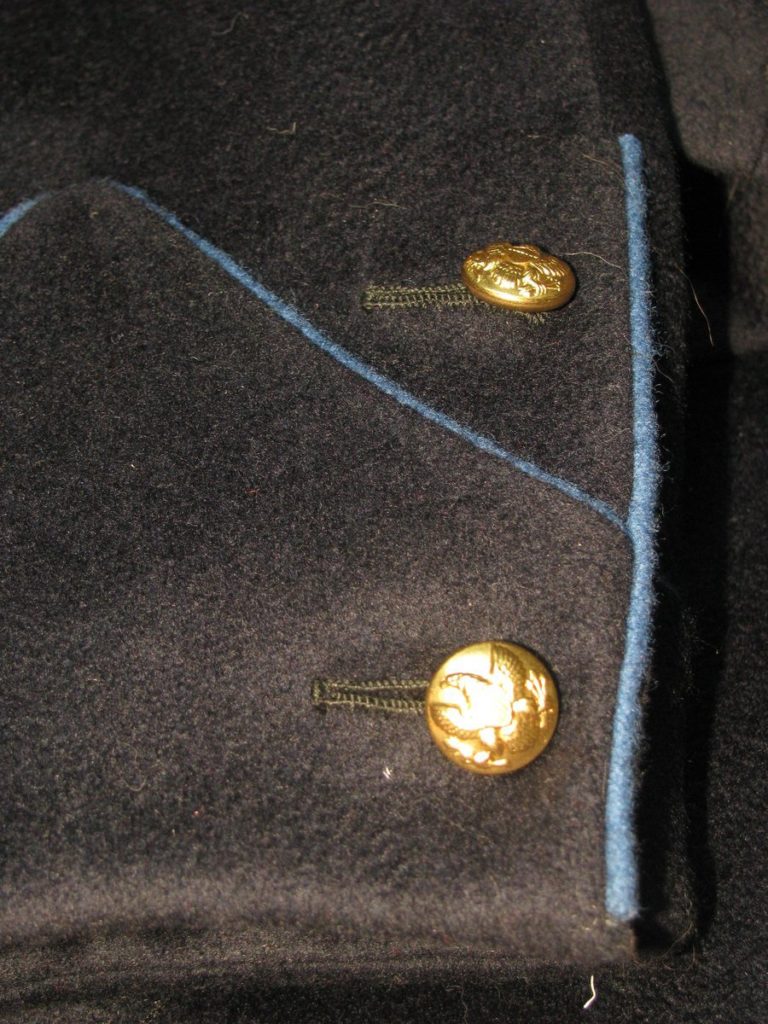
I sincerely hope you have learned a lot from this course and picked up some tailoring techniques along the way. Please don’t hesitate to ask any questions as you go – I want to help get you through to the finished coat. I leave you with a few photos of the finished coat.
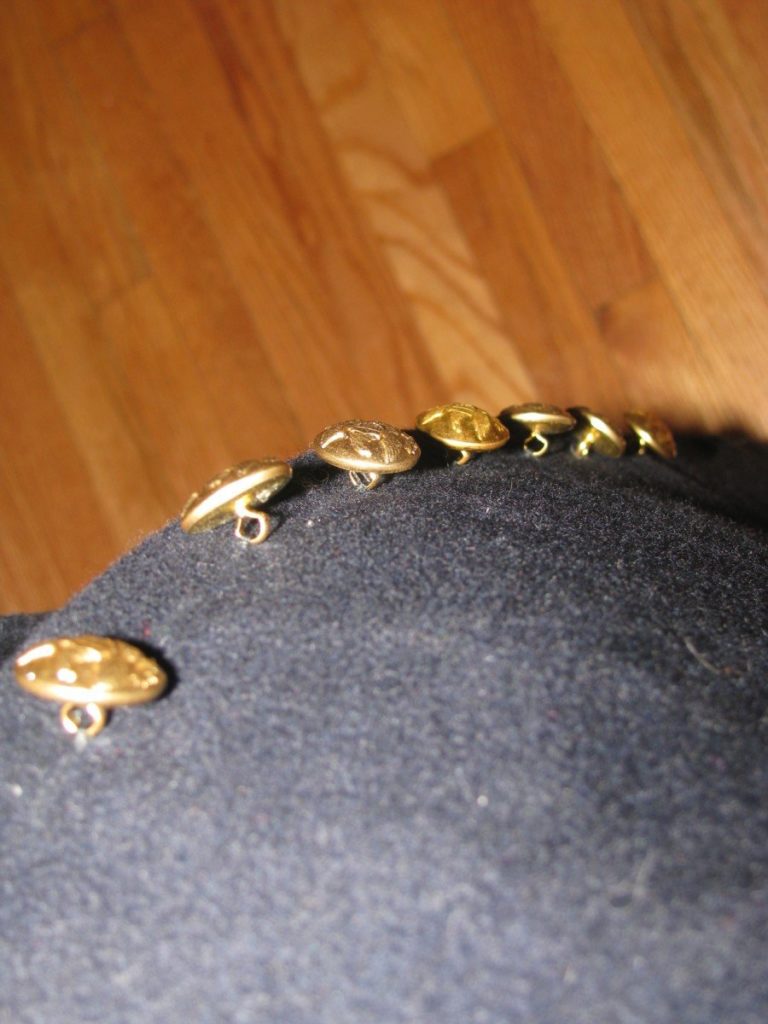
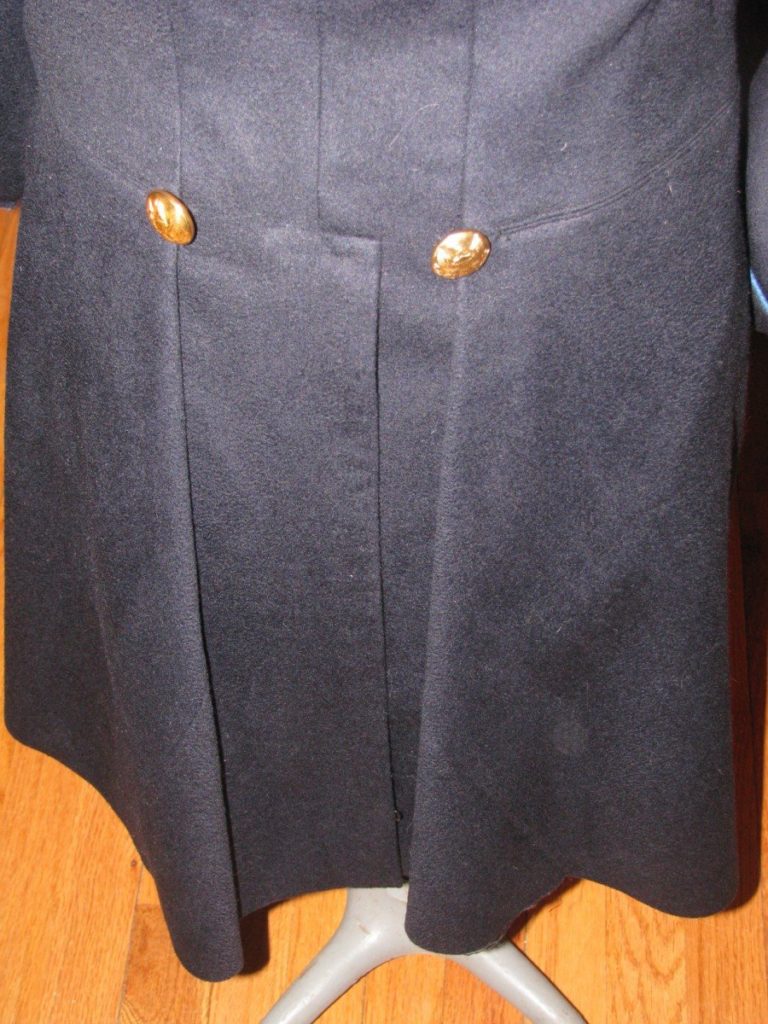
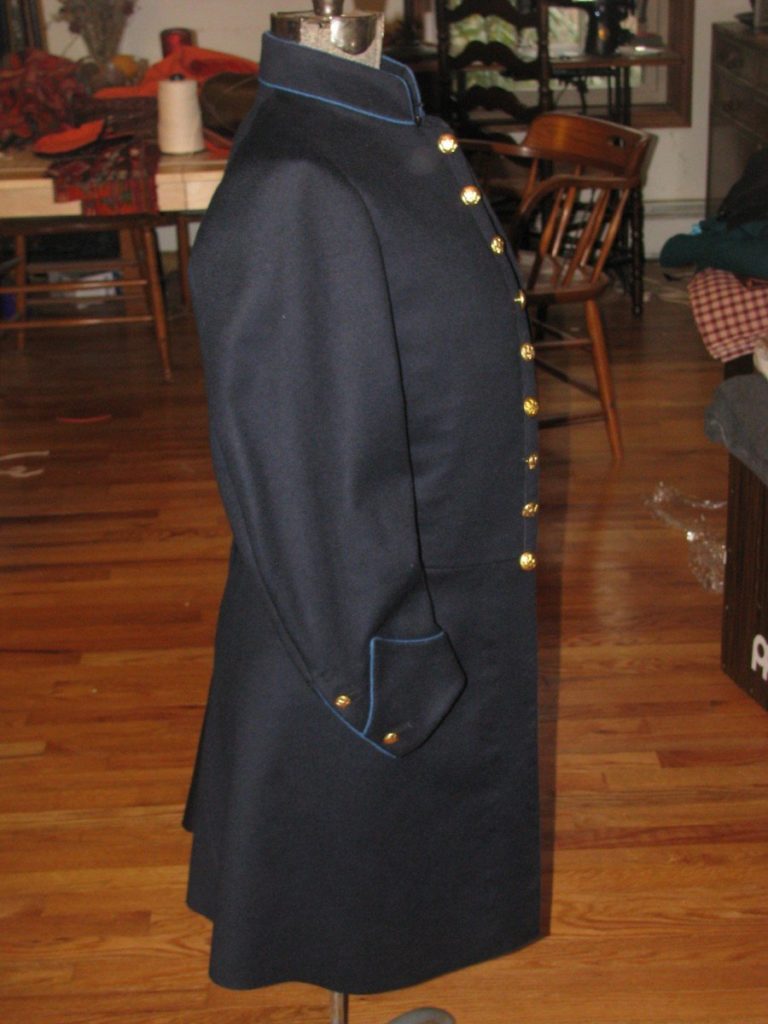
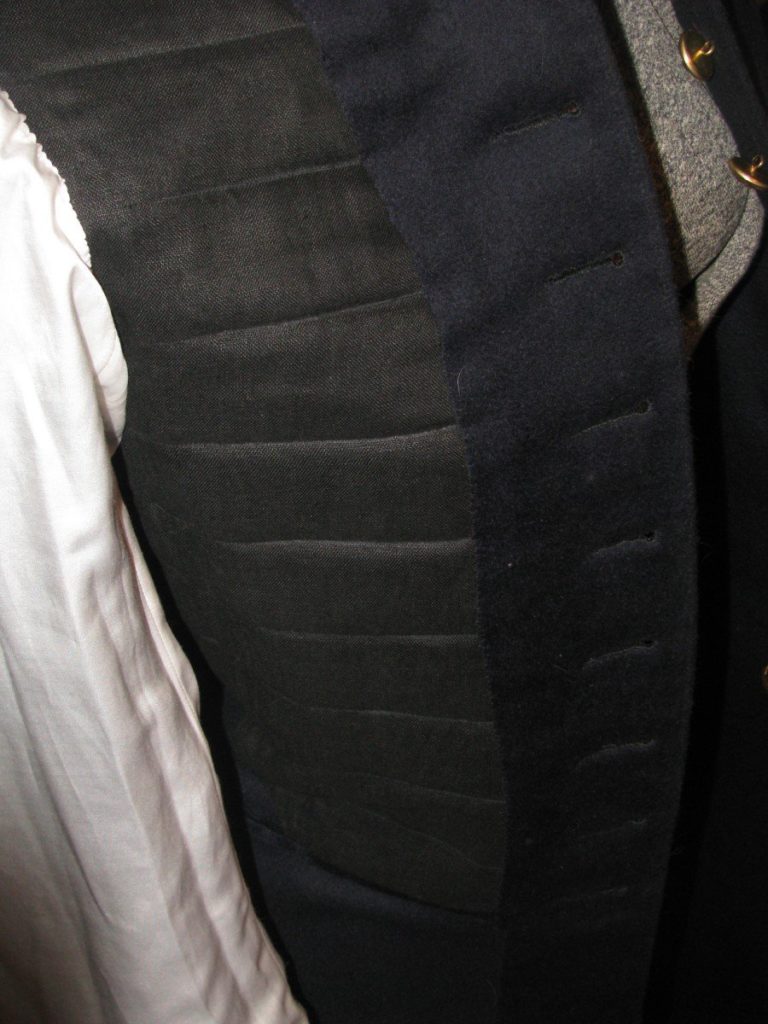

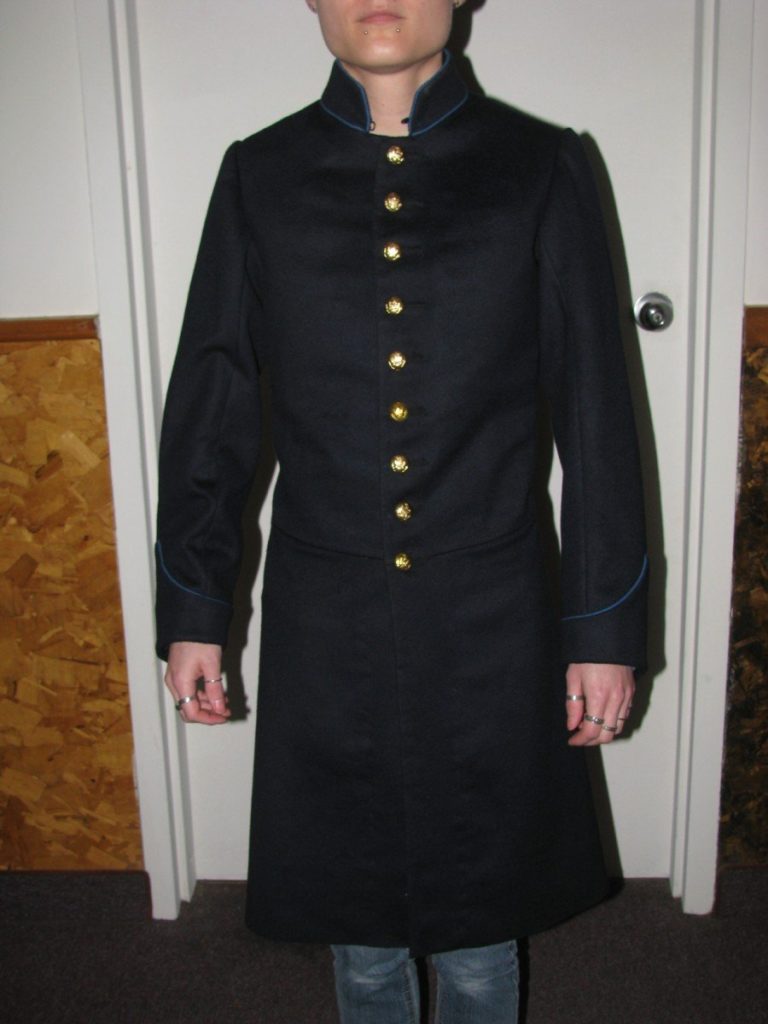
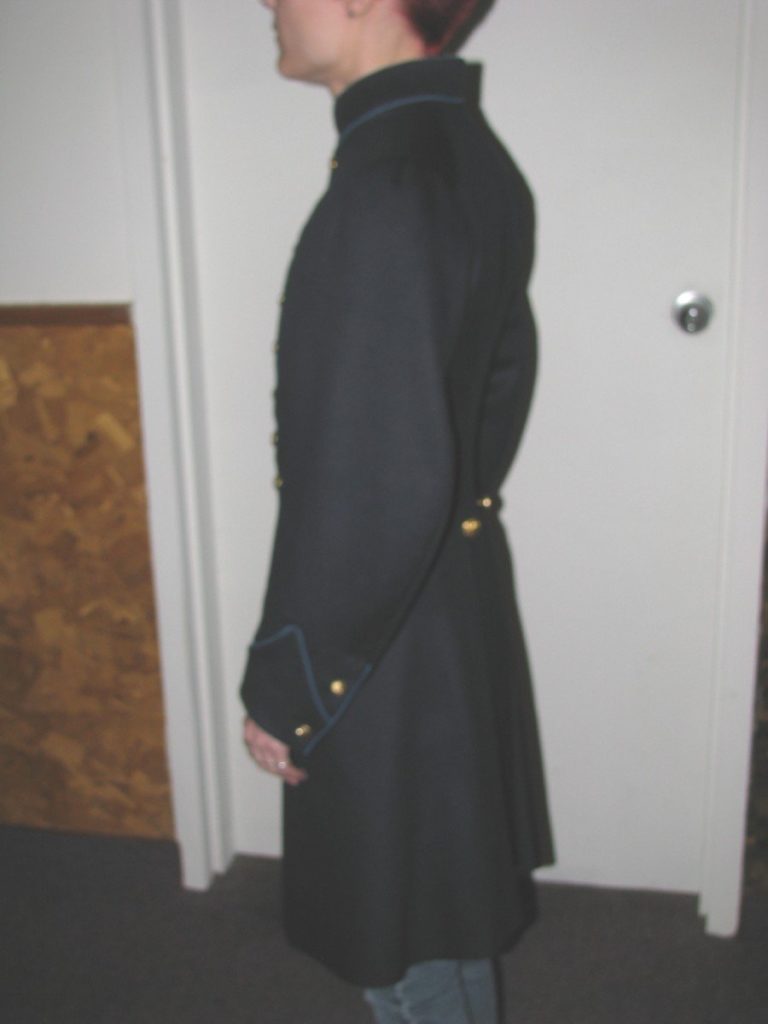

The Collar Tab
Original coats had a tab made of lining or mohair in order to hang the coat on a hook. This is a feature rarely reproduced, sadly.
Cut a piece of lining 4 inches long, and a piece of stay tape 3 inches long – the finished size of the tab. Baste the stay tape 1⁄4 inch away from one edge, keeping a half inch seam allowance on either side.
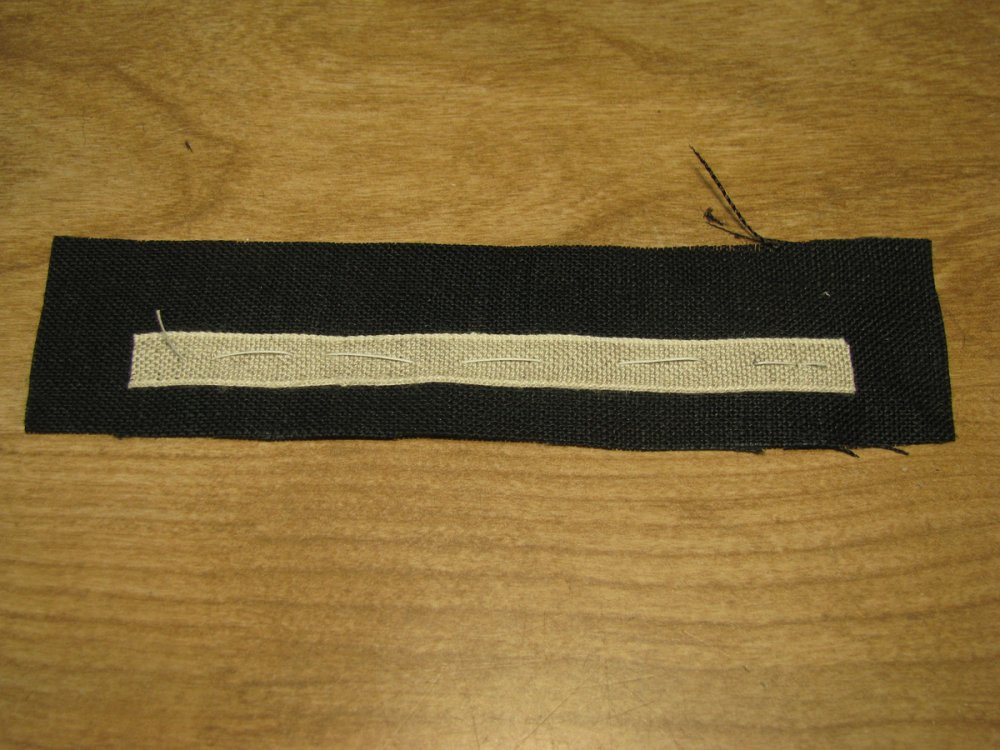
Press over this smaller edge onto the stay tape.
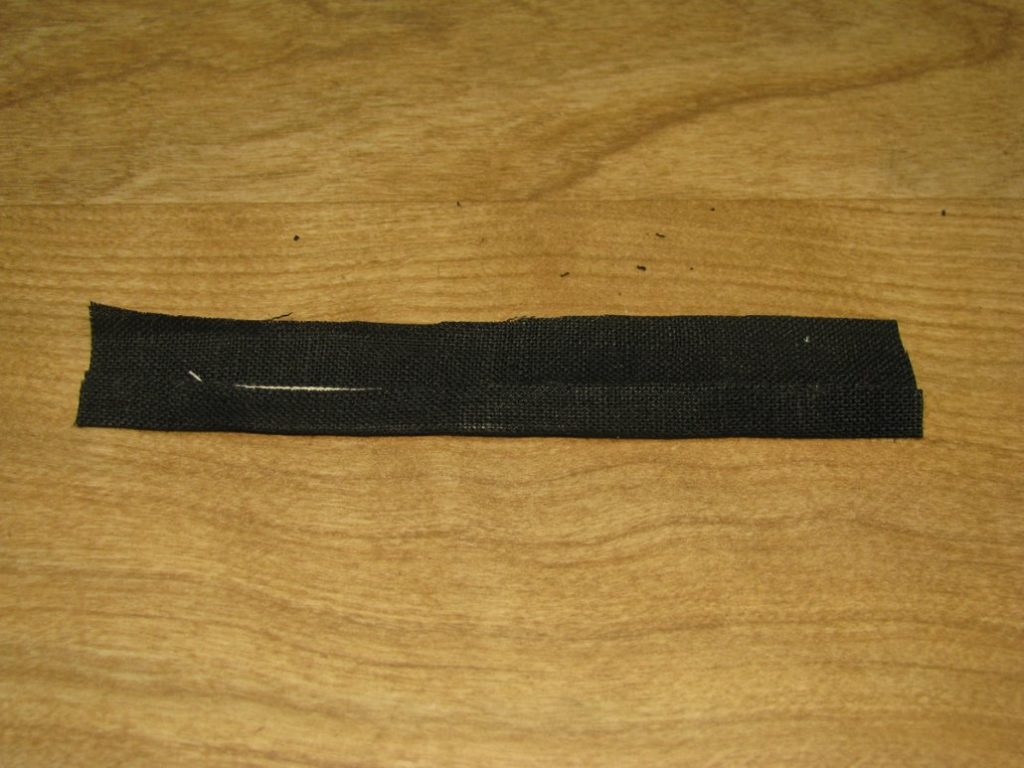
Fold the wider edge in half, then fold that over the stay tape, giving you a finished edge.
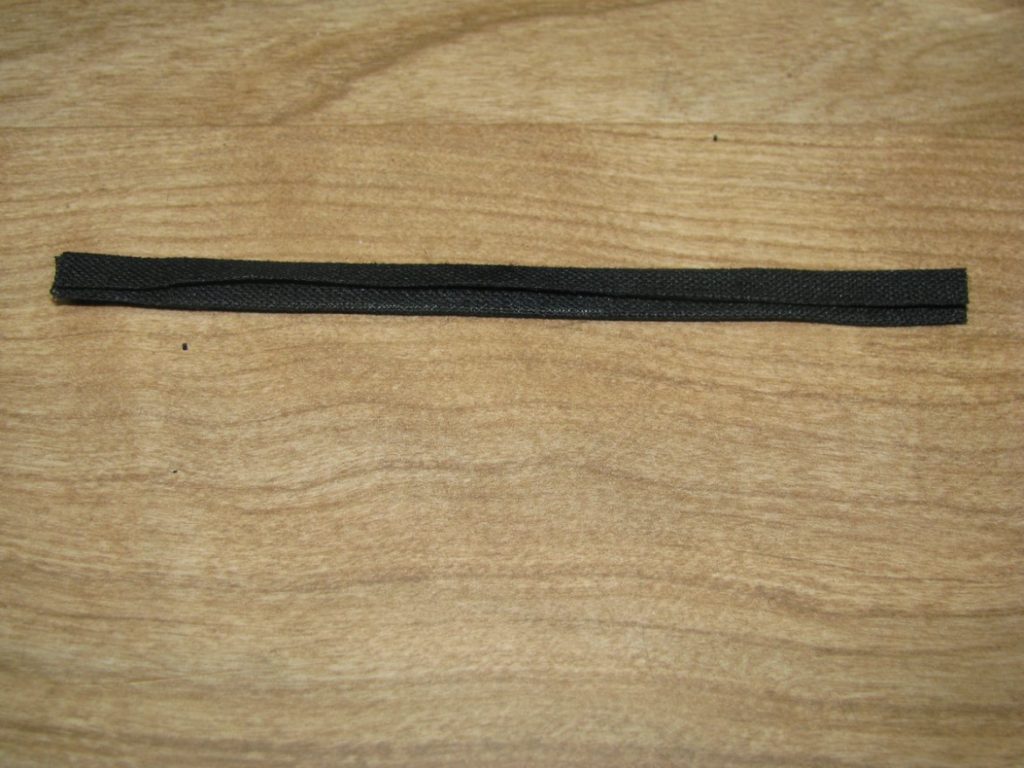
Fell this edge down the length of the tab.

Trim off 1⁄4 inch from both ends, and press the remaining allowance under. Place this on the coat, and fell down along both ends, starting 1⁄4 inch from the edge and working your way around to the opposite side. Just past the spot where the folded under edge stops, side stitch across the tab for extra strength.
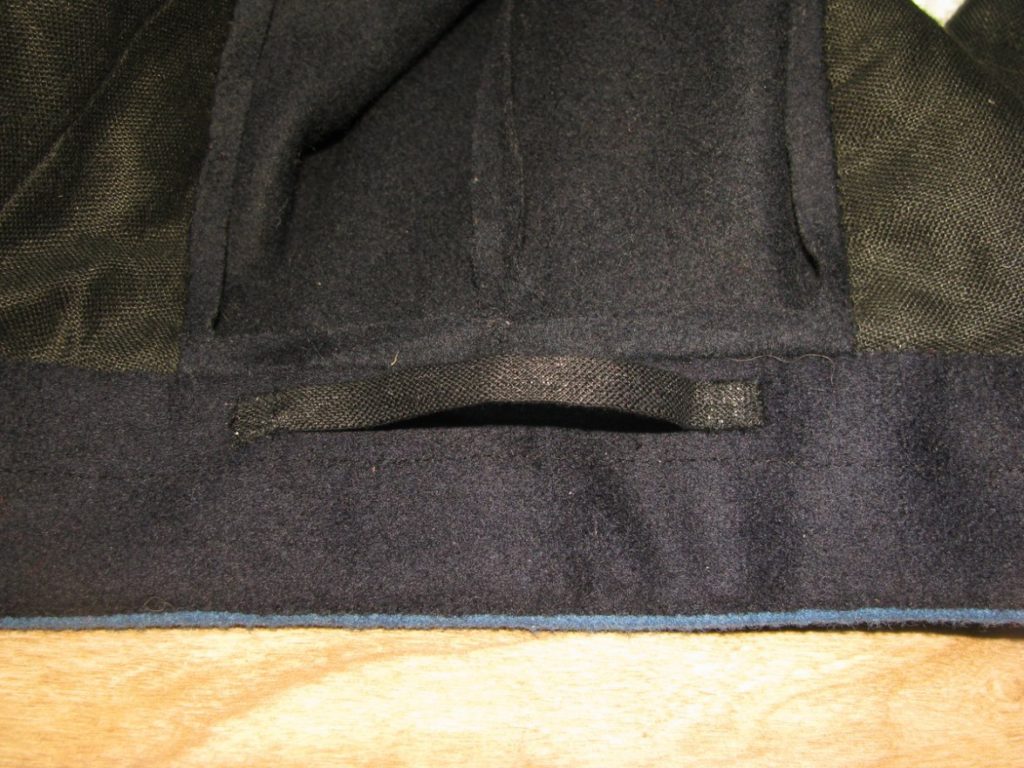
The Collar Lining
Now we are going to finish the inner edge of the collar. Begin by cutting a piece of wool using your collar pattern, seam allowances included.
Next cut off the seam allowance from the pattern, and cut a piece of canvas. You want it to be just slightly larger than the finished pattern, so cut on the outside of the chalk line this time.

Baste the two together, with the canvas centered on the wrong side of the wool. The basting should be done at the top to keep it out of the way of the stitching.
Draw a line down the middle of the canvas, stopping about 1⁄2 inch from either end. Machine stitch along this line to hold the layers together permanently.
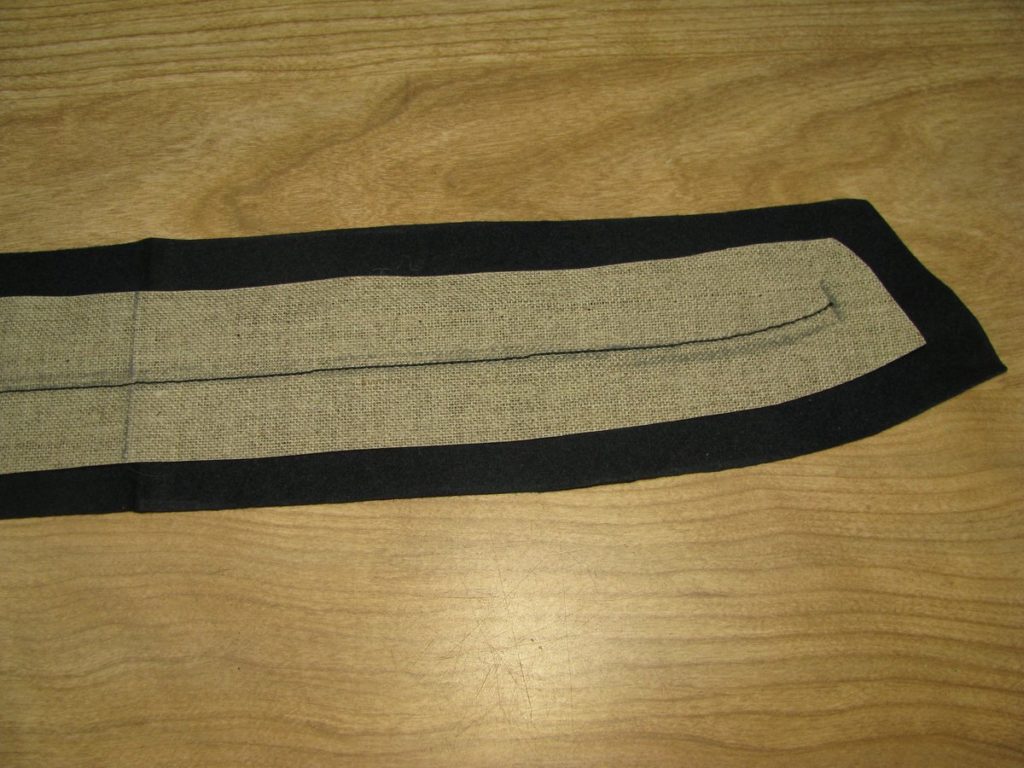
Place the inner collar on to the outer collar, wrong sides together. The stitch line should be centered on the outer collar. Baste from the center to one end. When basting, try to hold the inner collar on tightly, to help curve the collar inward and avoid excess fabric when wearing the coat.
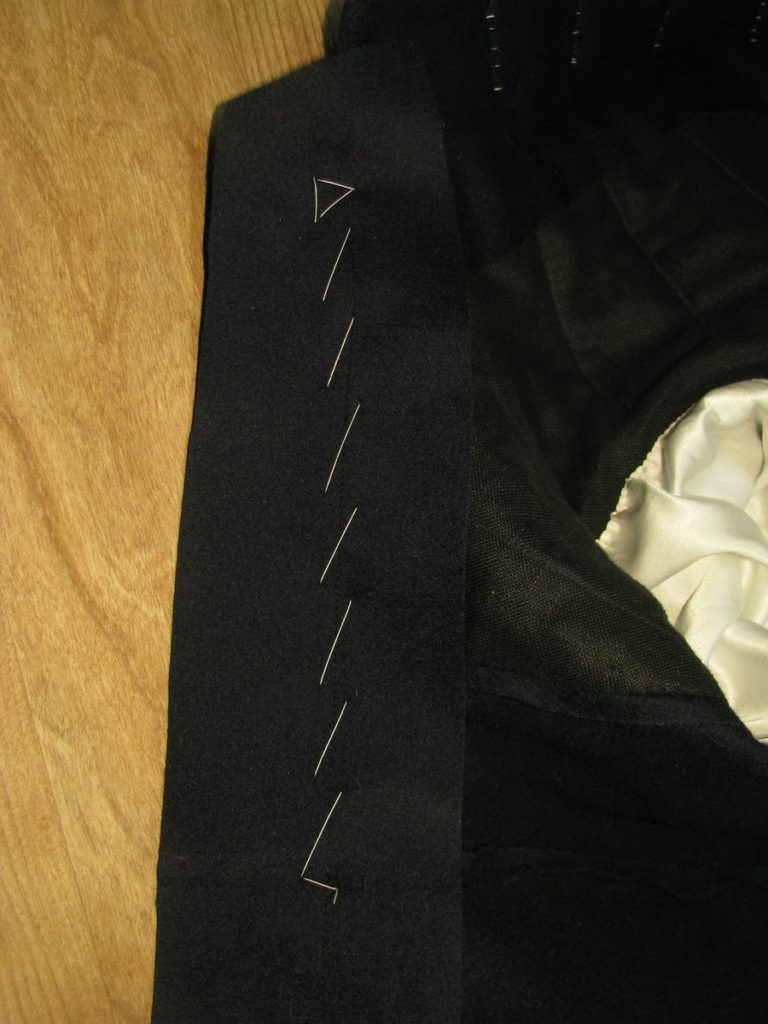
Baste from the center to the other end, securing the inner collar.
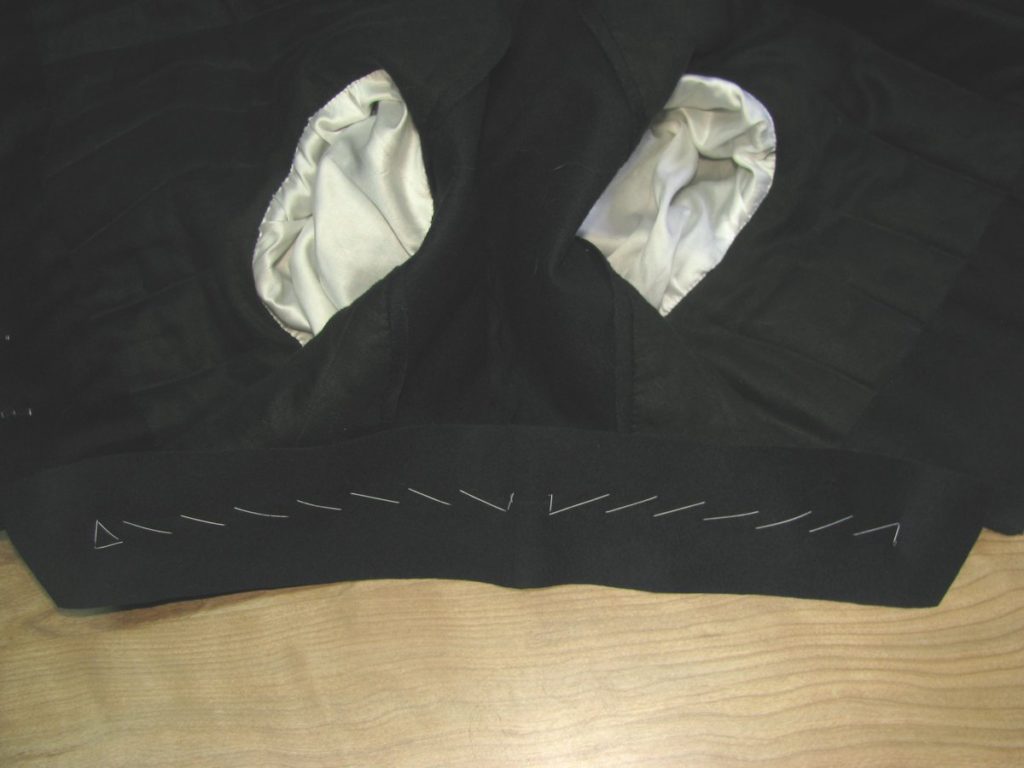
Fold back the wool layer, and trim the canvas to about 1/8 inch inside the piping stitch line. This can be tricky, so take your time and check your work frequently.
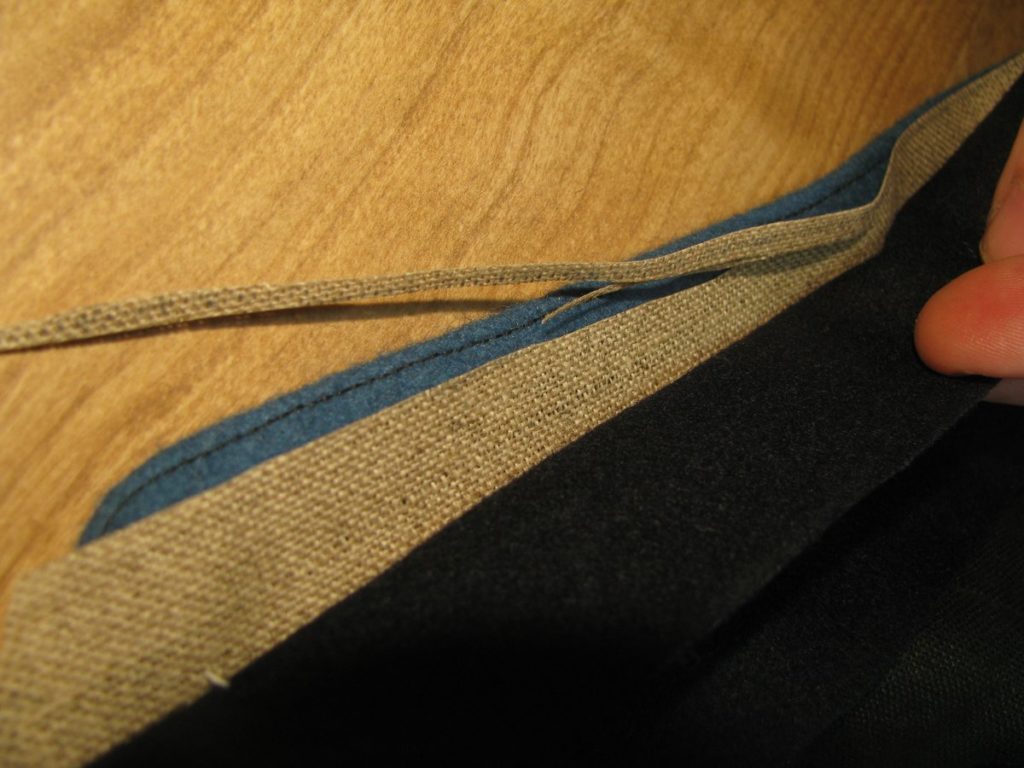
Trim along the bottom edge, again cutting the canvas 1/8 inch to the inside of the piping. When you get to the section covered by the lining and facing, you will need to do this by feel alone.
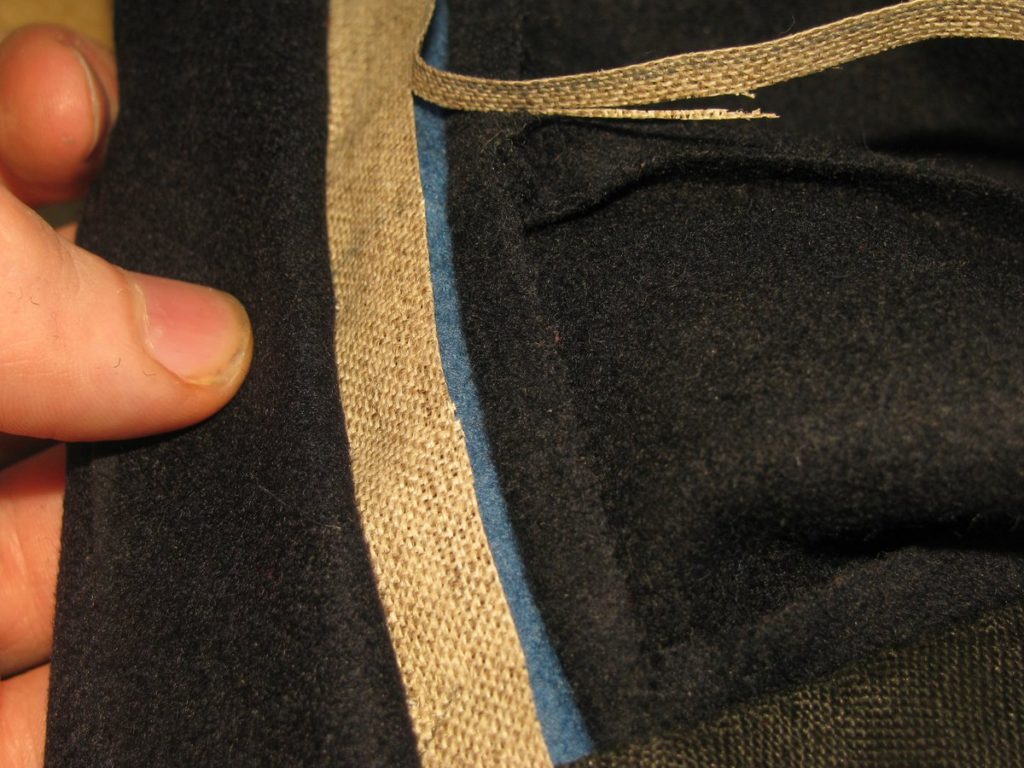
Trim the inner collar to be exactly even with the bottom row of piping. You want it to cover the top of the facing and lining still, so be careful not to trim off too much. Again, most of this is done by feel, rather than sight.
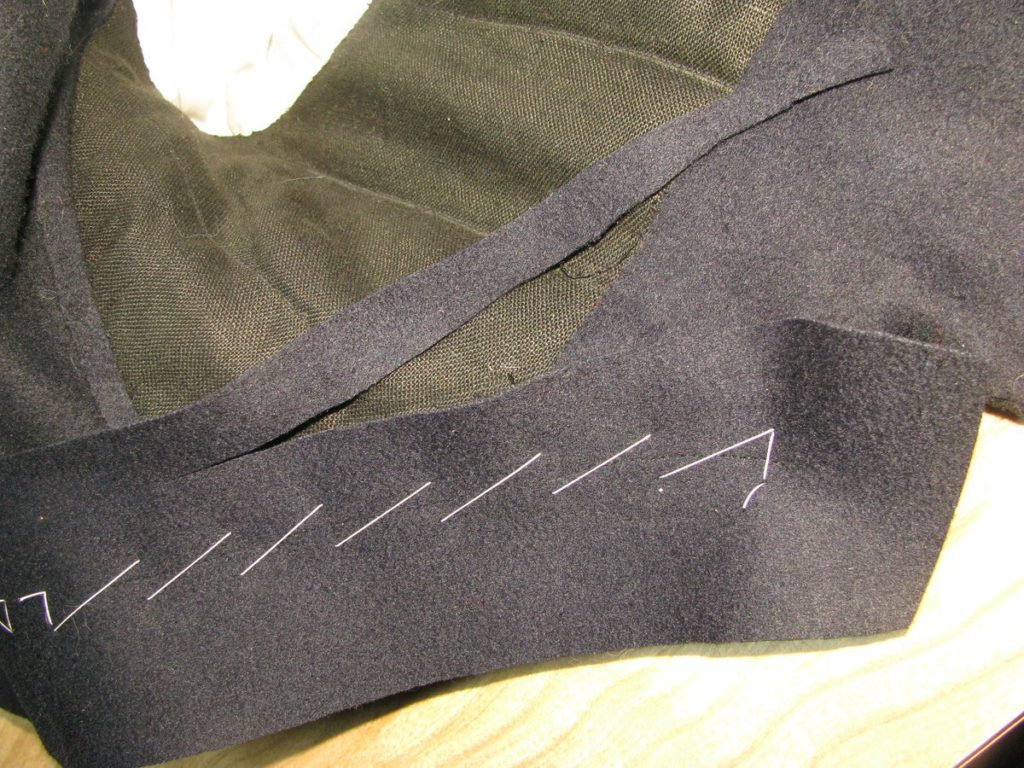
The top and both ends are trimmed exactly even with the piping stitch line.
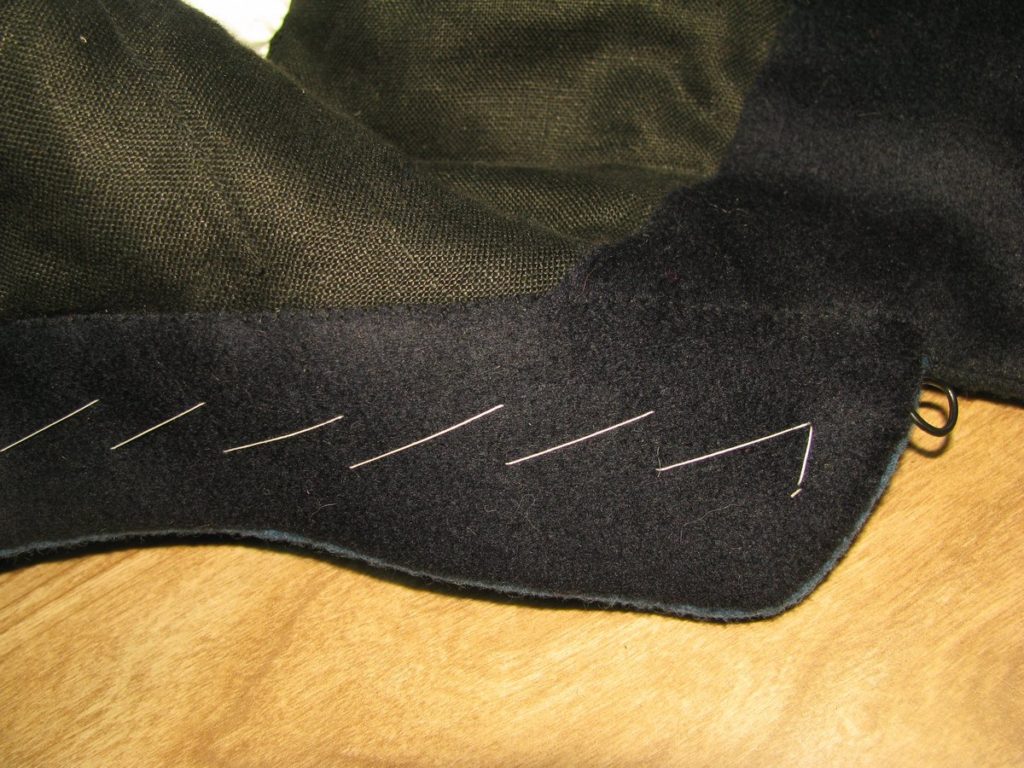
Now fell down the inner collar to the piping at the top and sides, and the facing and lining at the bottom edge.
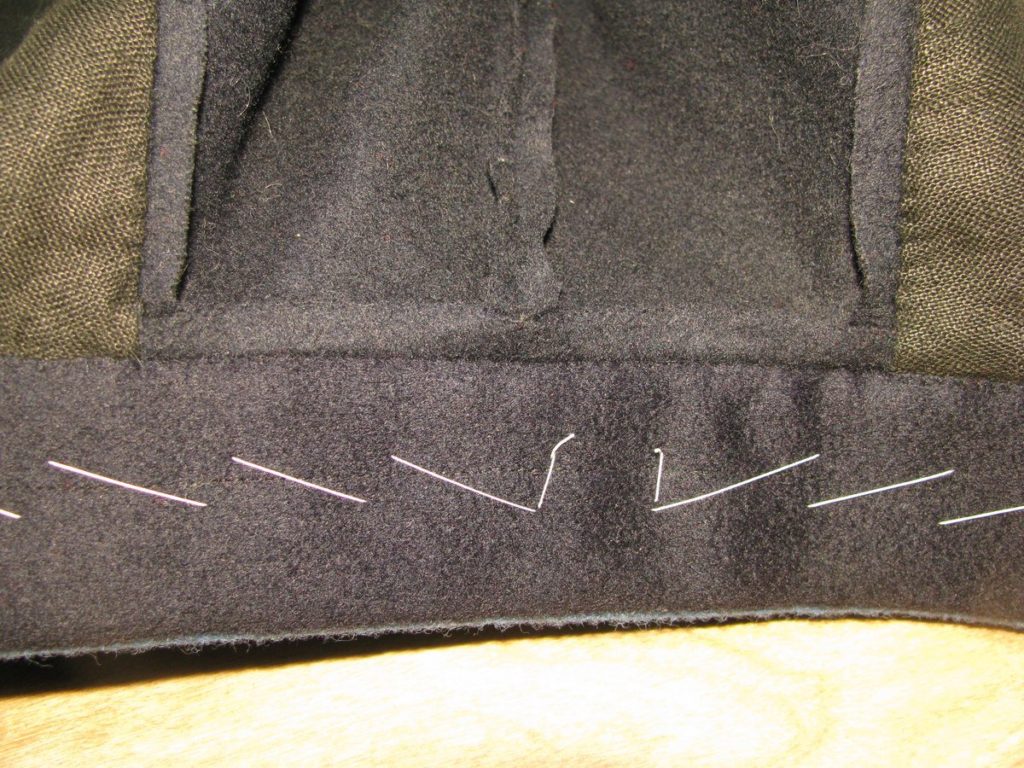
The inner collar is placed underneath the hook. You may need to widen the hook opening with a pair of pliers. Make a couple of stitches on either side of the hook and eye for extra strength.
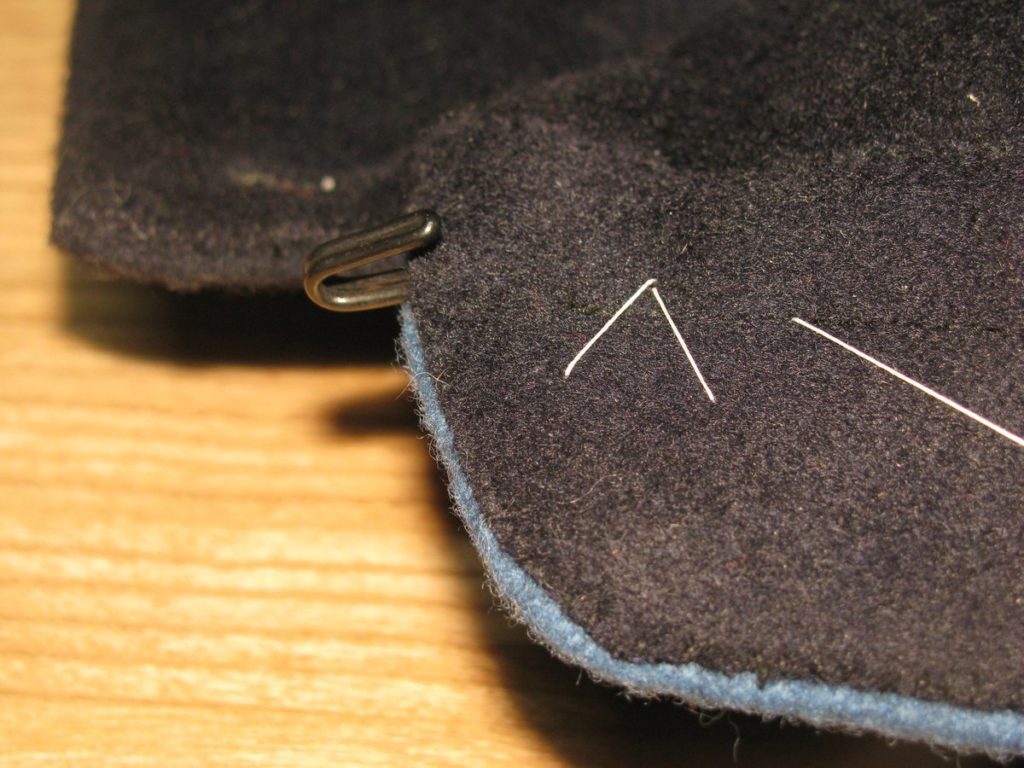
Hooks and Eyes
Original frock coats of the period had hooks and eyes on the skirts, and at the collar. I’m not sure exactly what the skirt hooks and eyes were used for. My theory is either to get them out of the way when sitting, or during long marches to try to keep cooler. When hooked together, the skirt takes on the appearance of a Regimental coat of the 1700s, so maybe it’s just an evolution of that.
Begin by marking about 3 to 4 inches along the inner edge of the front facings, and the back facings. The hooks are placed first, on the front of the coat.

Sew a small loop around one of the eyelets, using silk buttonhole twist. Work your way around that eyelet, ensuring the stitches are close together for a nice appearance.
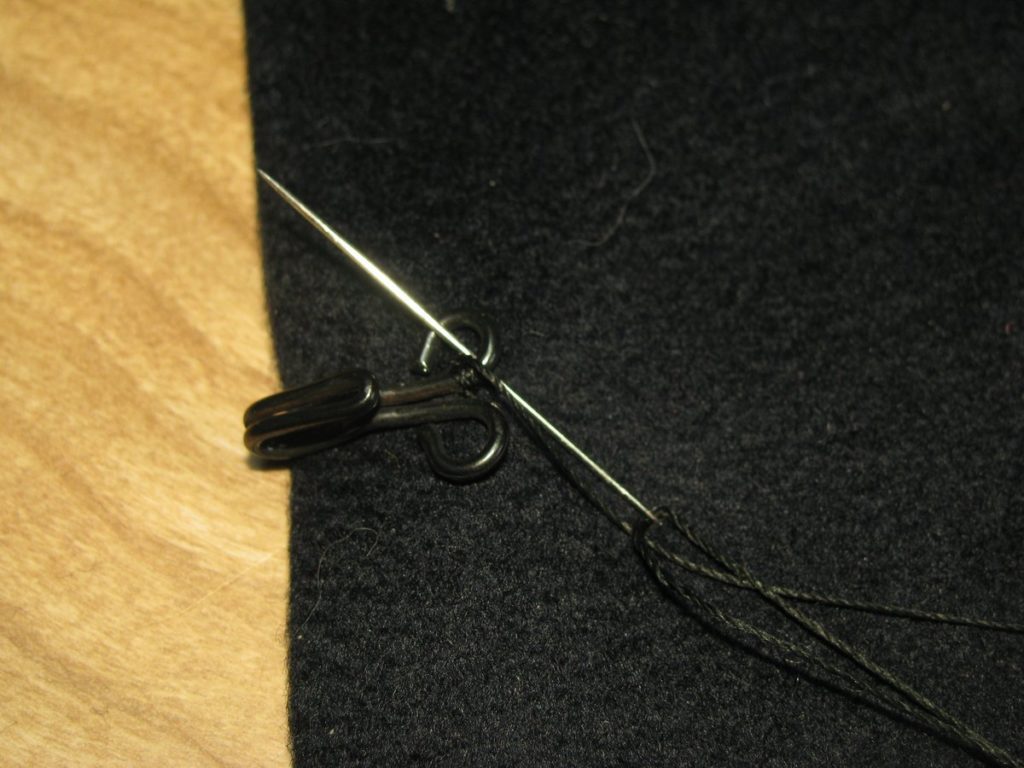
When finished, you should not see any of the metal on the eyelets. When stitching, be sure the stitched do not show through to the right side of the coat.
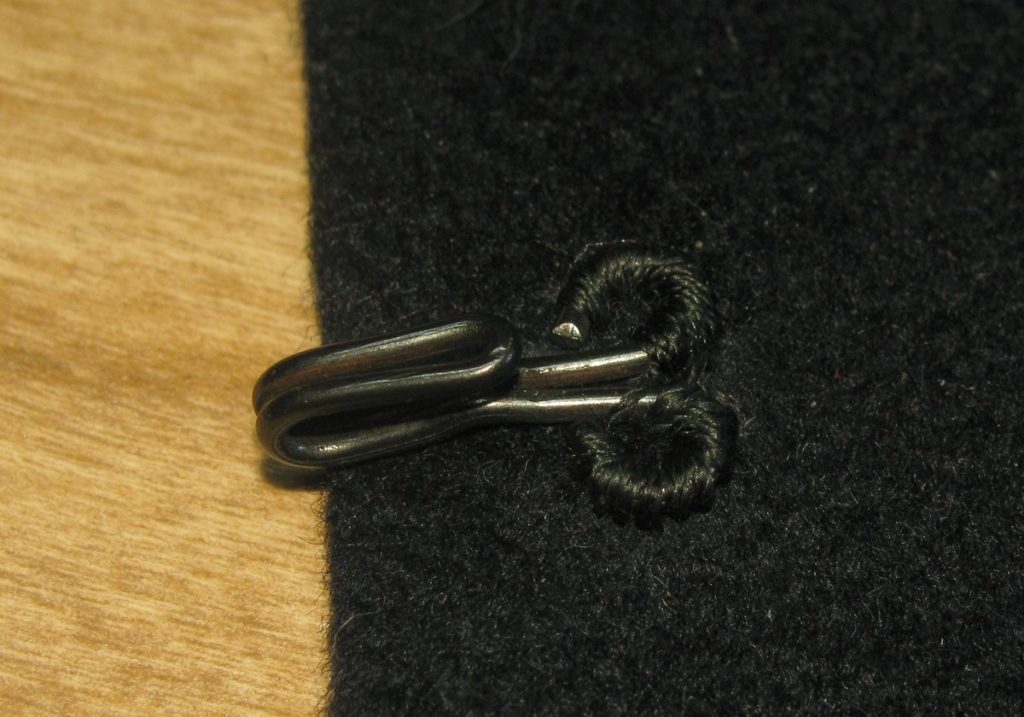
Do the same thing with the eyes on the back. Both the hooks and eyes should extend off the edge of the coat by about 1/8 of an inch.
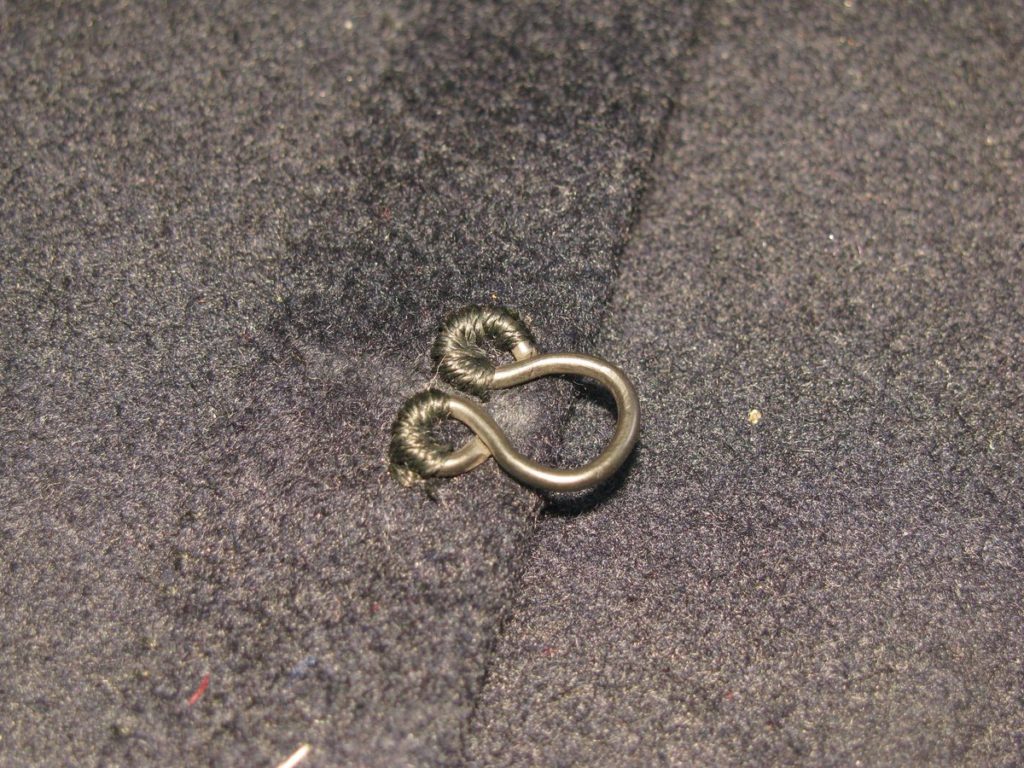
On the right side of the collar, sew an eye down to the piping in the same manner. On the other side of the collar, place a hook.
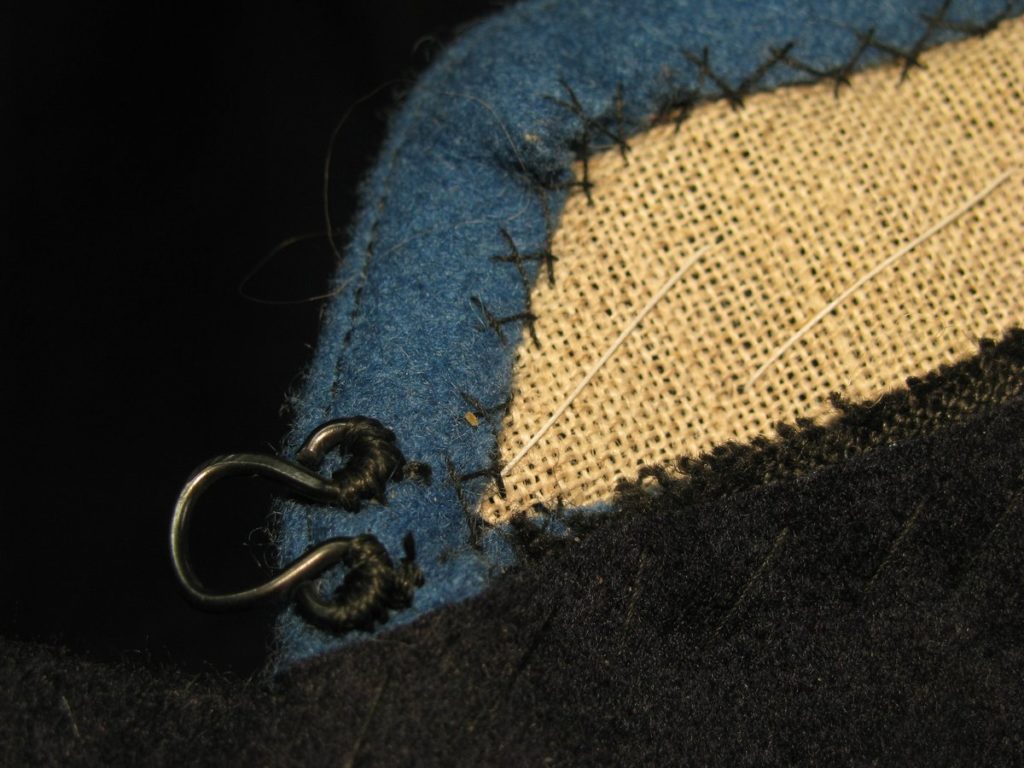
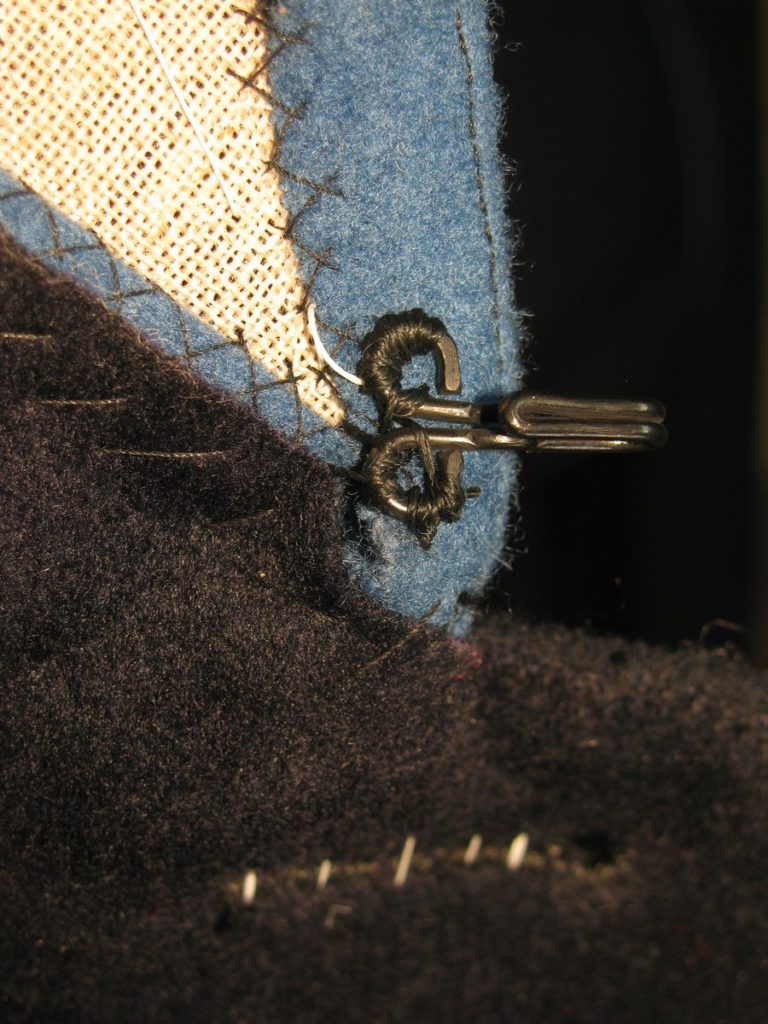
Facing Bottoms
At the bottom edge of the front skirt, close off the facing by stitching it to the front of the coat with a buttonhole stitch, using silk twist. This is a part of the coat that may get extra wear and tear, so the extra strength is good.
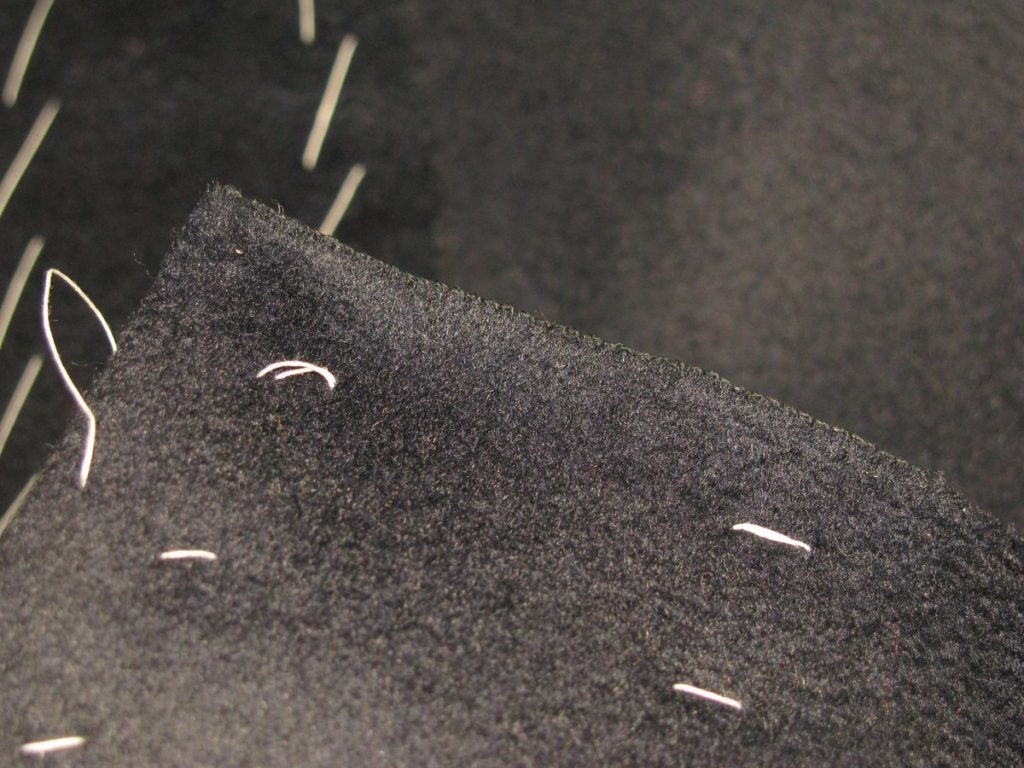
At the back skirts, trim off the inlays. You want them to be even with the skirts, so drawing chalk lines may be necessary.
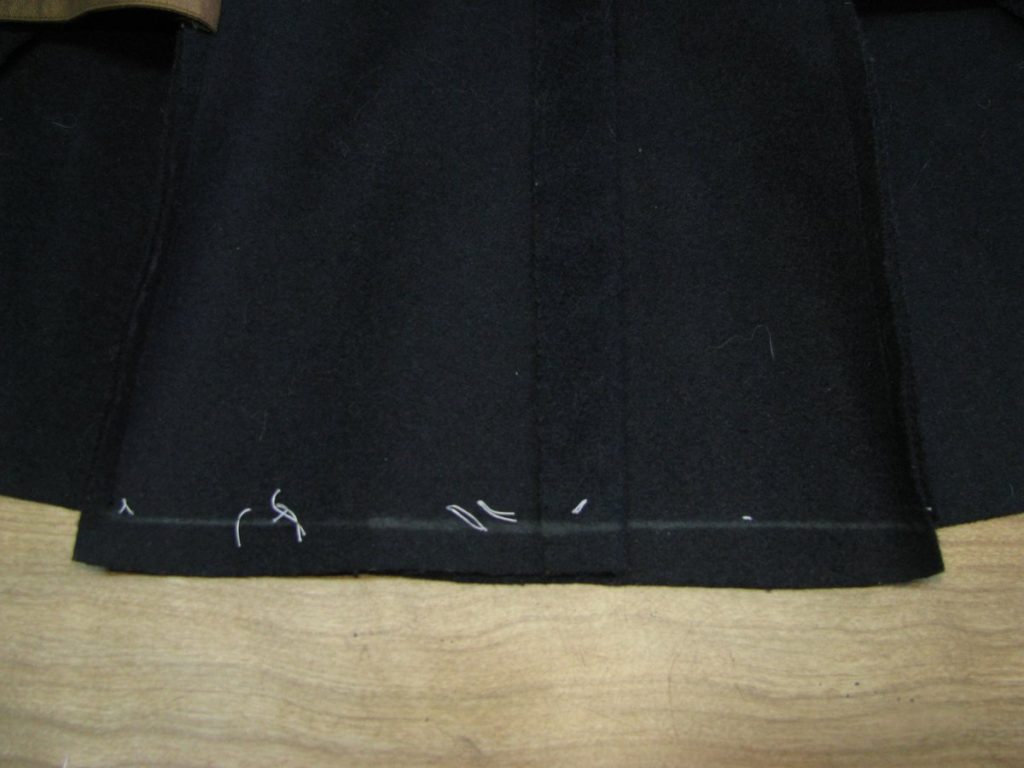
Finish the bottom of the back skirt facings with a buttonhole stitch as well.
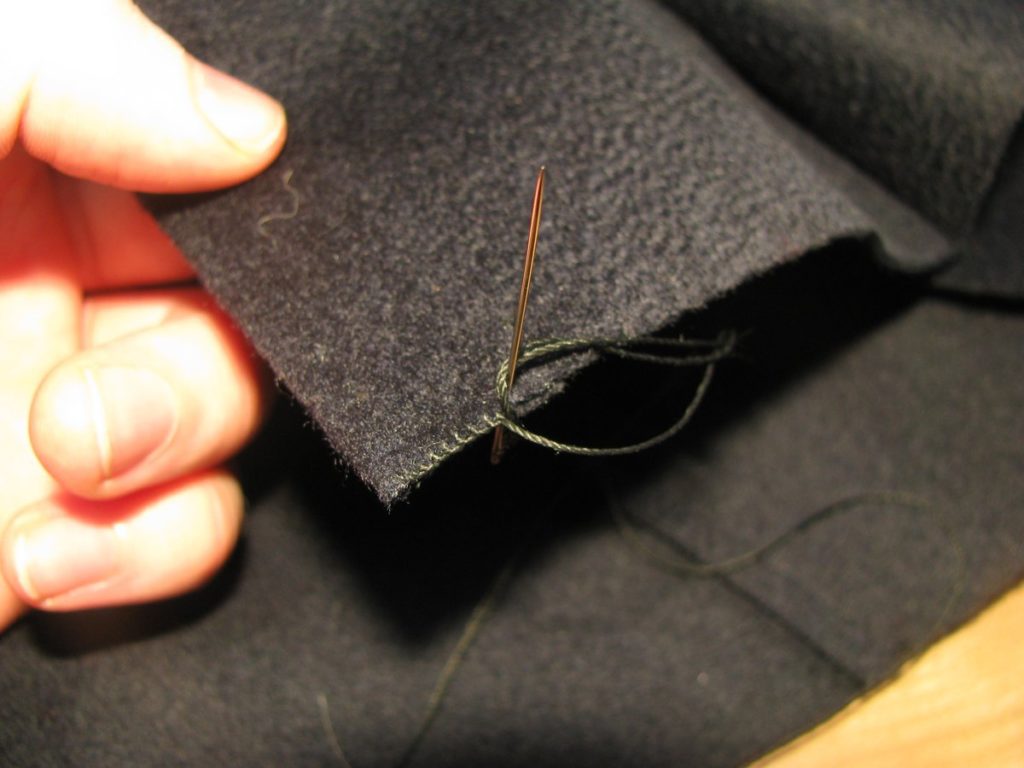
Securing the Lining
There are just a few odds and ends left on the coat to finish. First
baste the remaining unfinished lining down to the collar piping,
using a basting diagonal stitch. Use black silk for this so that it will
be invisible if the collar ends up not completely covering it. The
stitches should be about 1⁄4 inch in length.
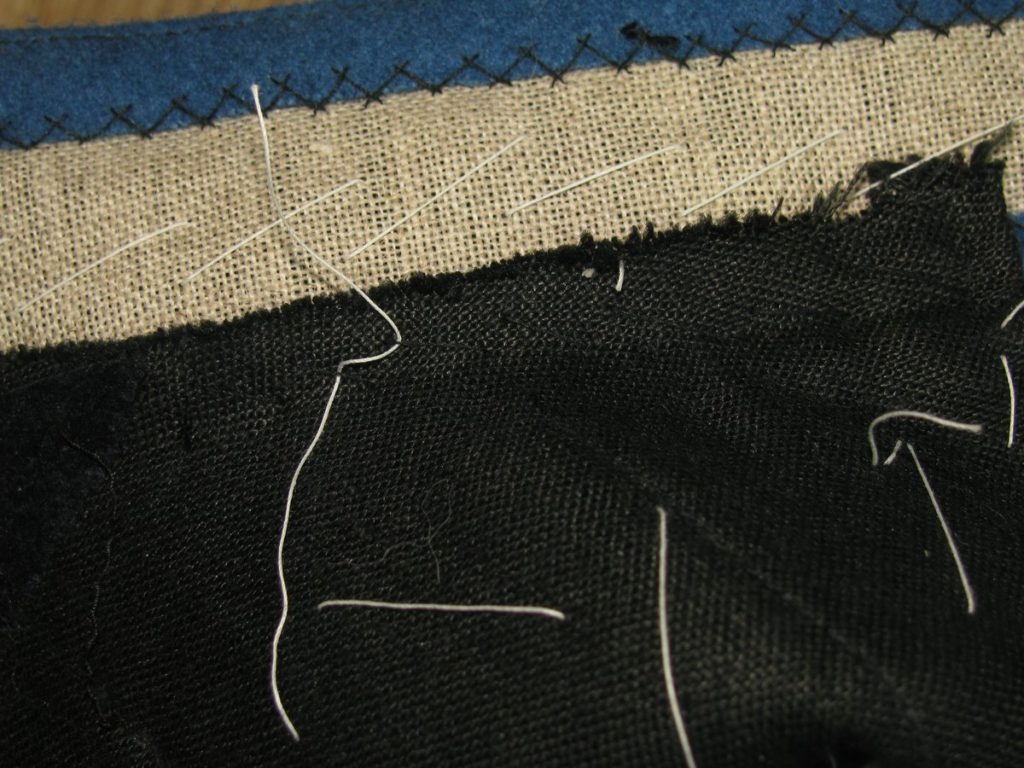
Button Stay Stitching
Along the right side of the coat, from the waist seam, to half an inch below the collar, and half an inch from the edge, chalk a line using black chalk. Top stitch with a machine, or by side stitching if sewing by hand, along this line. This will help bind the layers together, making a sturdier coat, and preventing strain on the buttons.
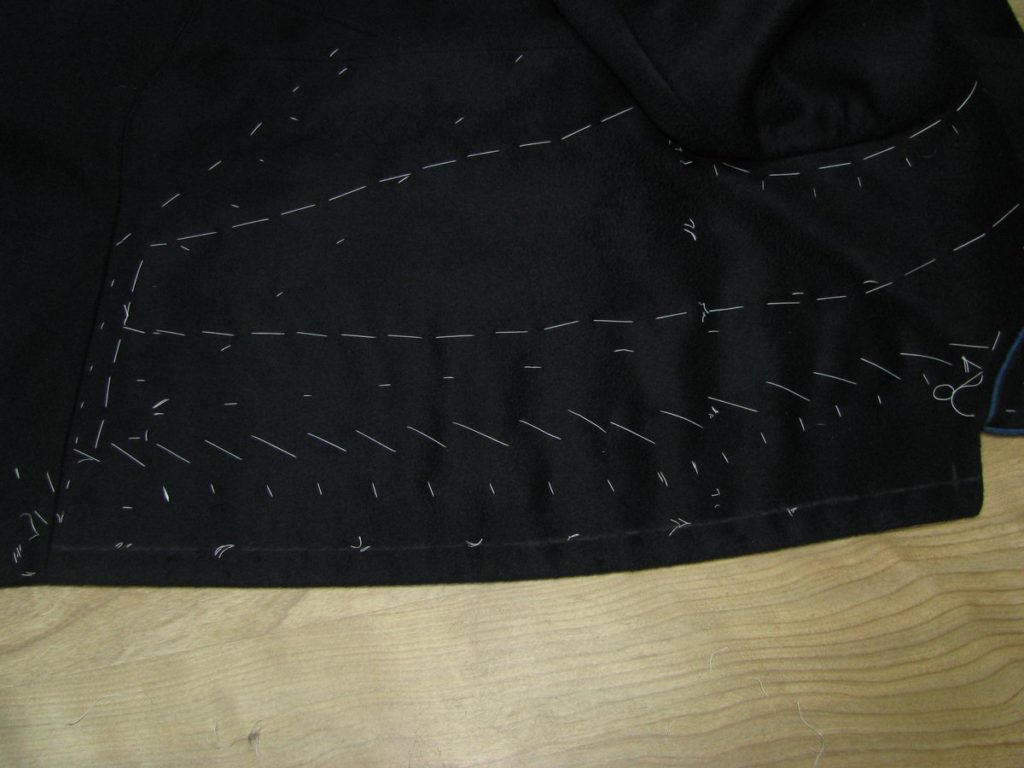
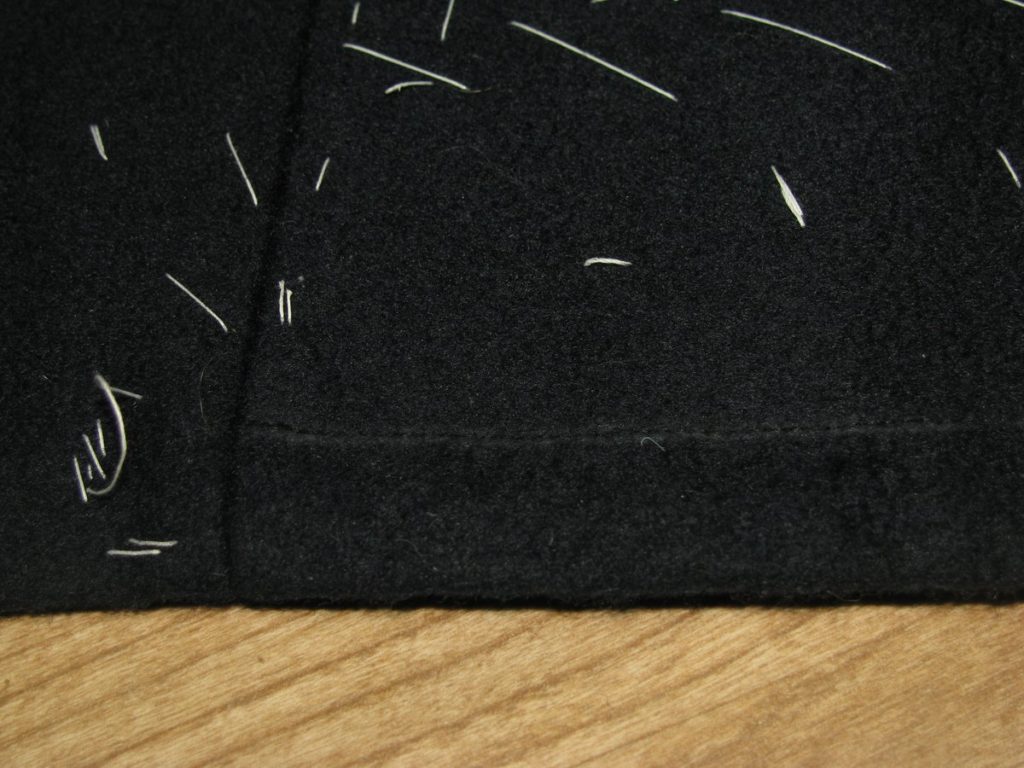
I prefer to stop 1/2″ from the top of the coat, but I’ve seen some originals where the stay stitching goes all the way to the top.
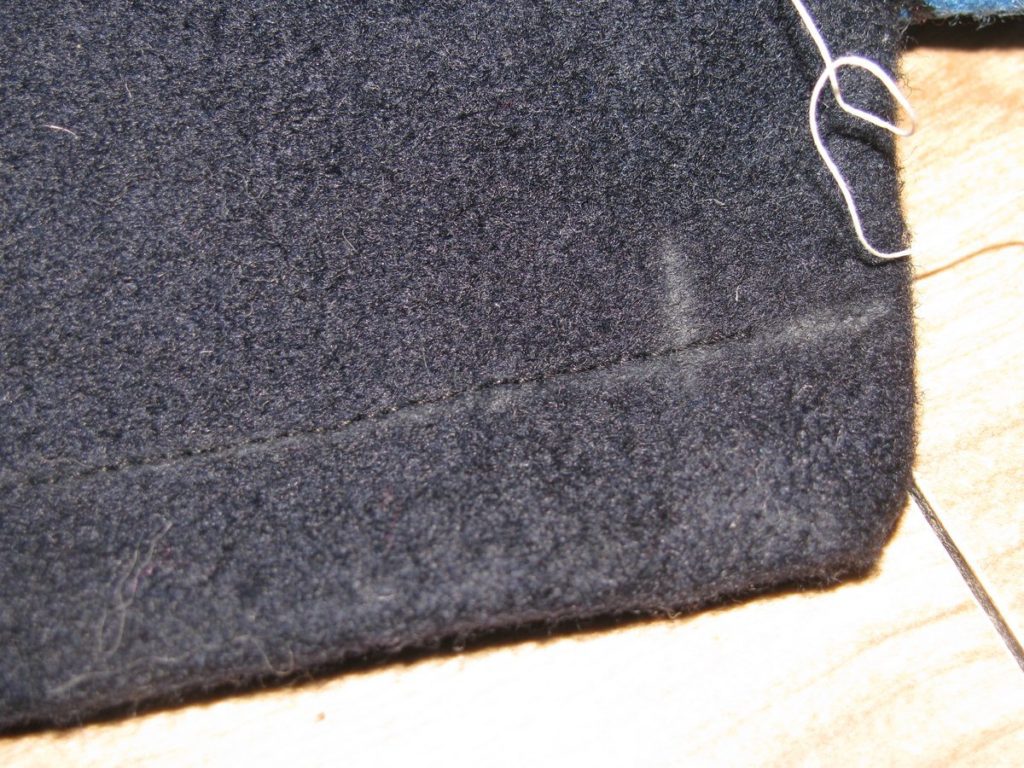
Setting the Lining
Press the top edge of the sleeve lining over to the wrong side, using a 1⁄4 inch seam. Place shirring stitches along the top of the sleeve head. I only did one row, but feel free to do all three rows if you need more control.
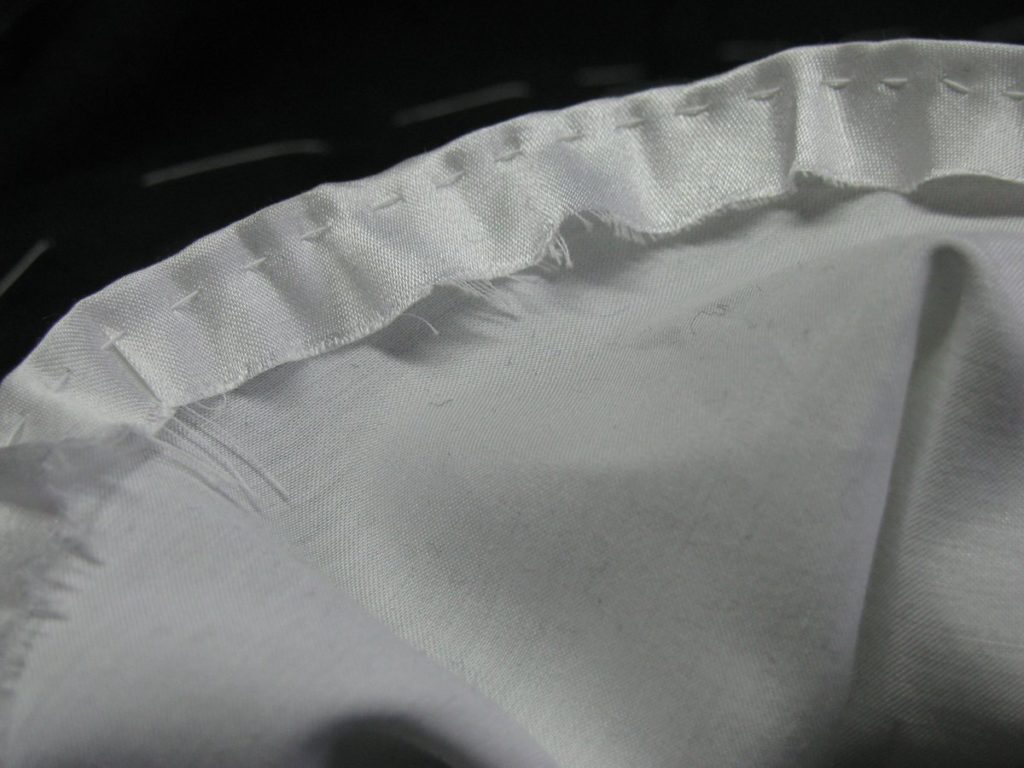
Baste the bottom edge of the lining to the coat body, just covering the stitches holding the sleeve onto the coat.

When you get to the upper sleeve, gather the stitches as you did before, distributing the fullness. Baste in place. Because the lining cannot be shrunk away, you will naturally get a slightly messier looking lining. Try to smooth things out as best you can.
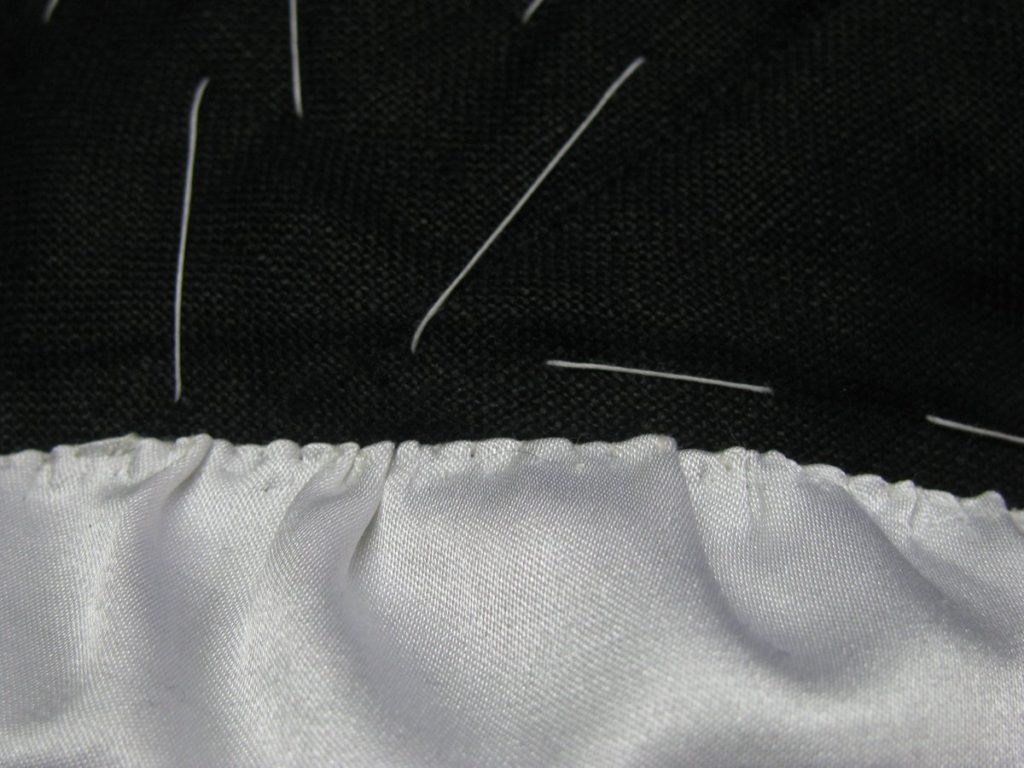
Fell down the sleeve lining to the body, using 10 to 12 stitches per inch. Congratulations, the sleeves are finally done, and we can move on to something more exciting!
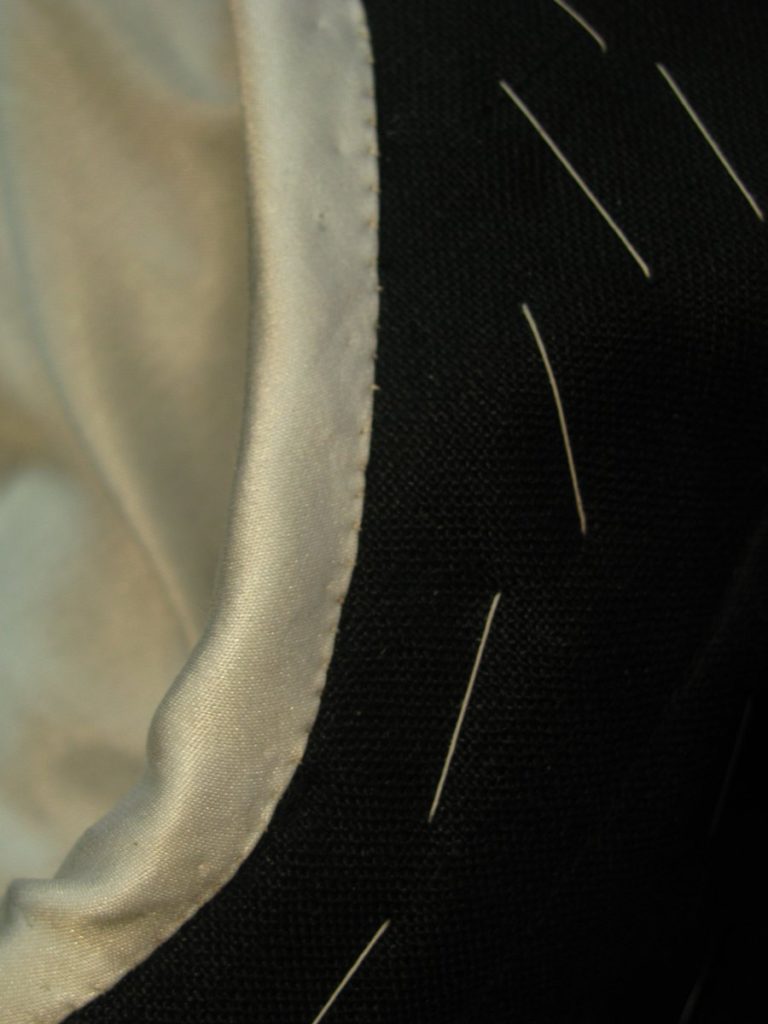
Setting the Sleeves
Setting the sleeves can be tricky at first, but there are a couple of steps we can take to make things easier. Due to the amount of ease put in Devere’s sleeves, and the weight of the fabric used, it is difficult to ease in the fabric nicely without some help.
Begin by making three rows of shirring stitches across the inner edge of the sleeve head. These stitches are 1/8 in length, and the rows are 1/8 inch apart. You must keep the stitches aligned between each row for proper gathering. Three rows may seem excessive, but the third row helps lock the gathering in place, making things easier for you. The ends of the stitching should be left free with about 5 inches of extra thread on each end, to ensure it doesn’t slip through at the ends.
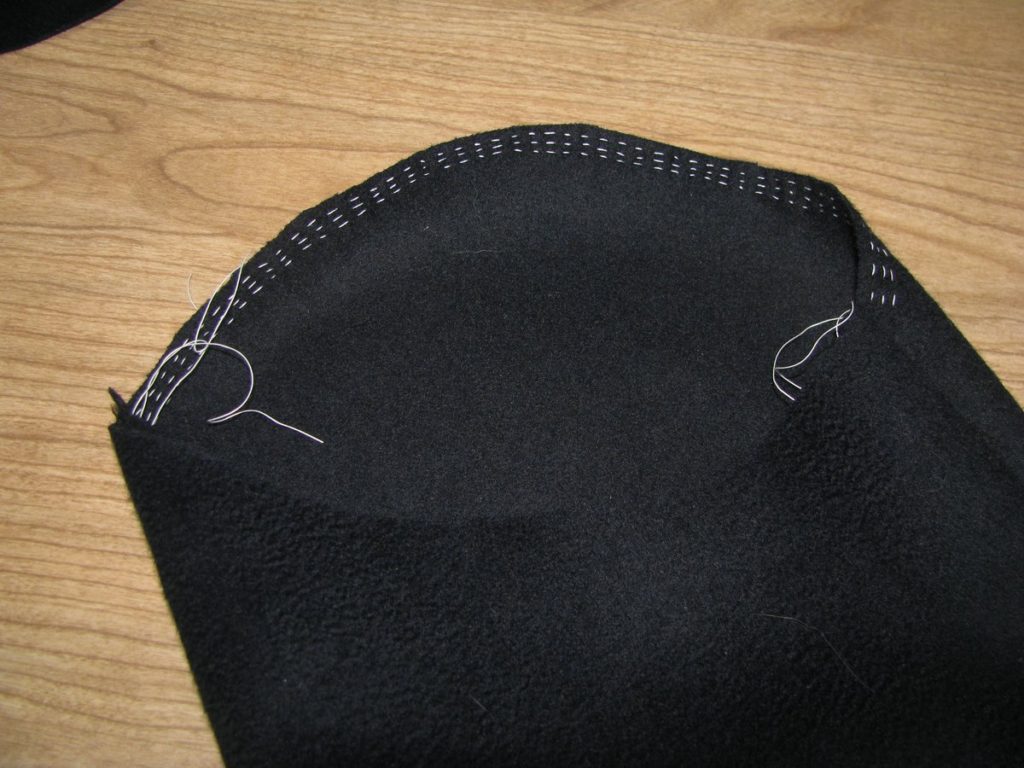
At the edge of the center back, mark an ‘X’ in the middle of the small strip near the armscye. Do the same to the back seam of the sleeve. Place these two together and hold them in place with your fingers.
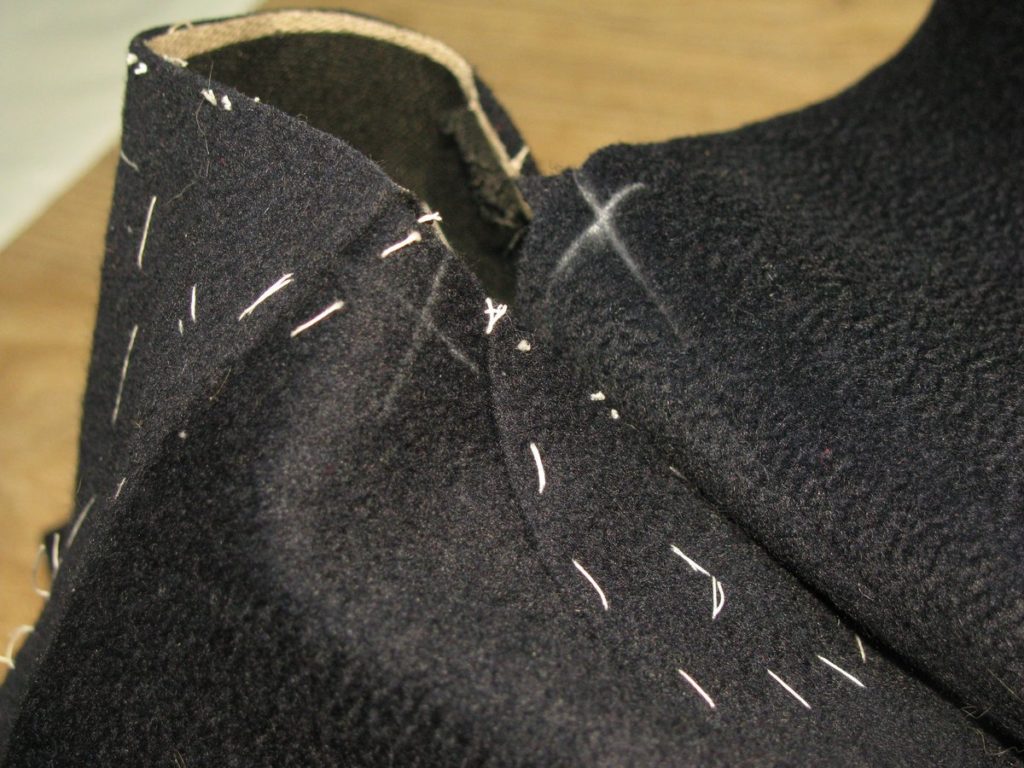
Turn the coat to the inside, still holding these layers together. Make sure the edges of the armscye and sleeve head are even, and then baste the ‘X’s together with a couple of basting stitches.
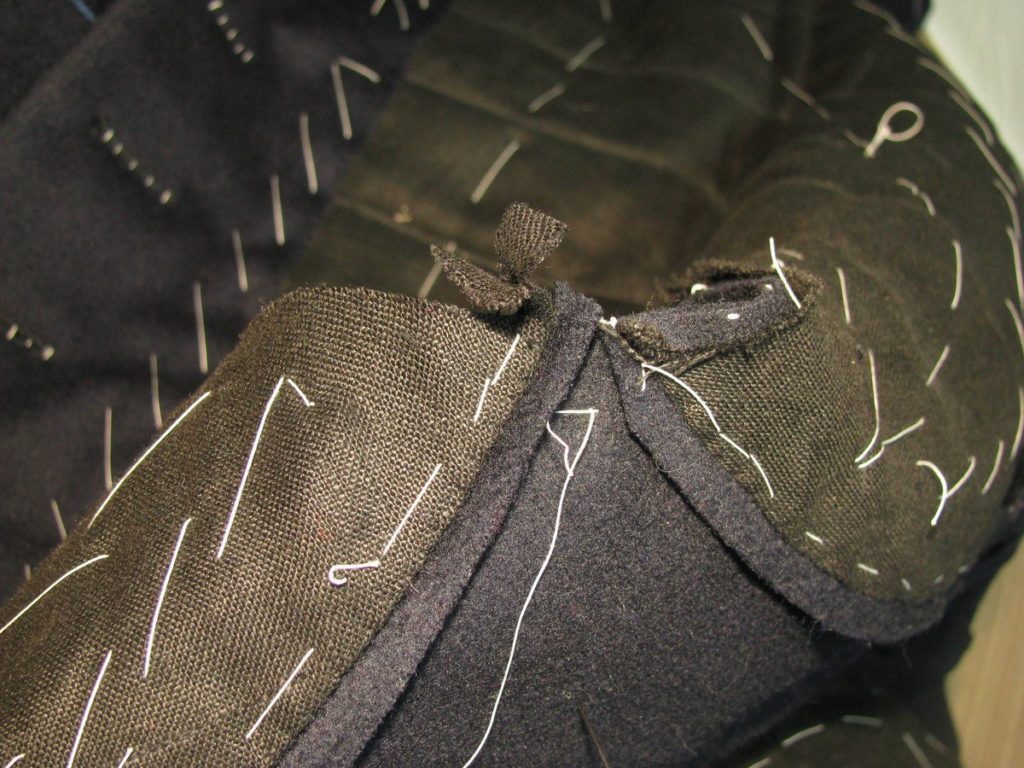
Holding the layers together with your left hand, ensure that the edges are lined up, and baste down the bottom edge of the sleeve, using a 1⁄4 inch running stitch. You want to baste the bottom half of the sleeve first, so that you know how much to gather for the top sleeve.
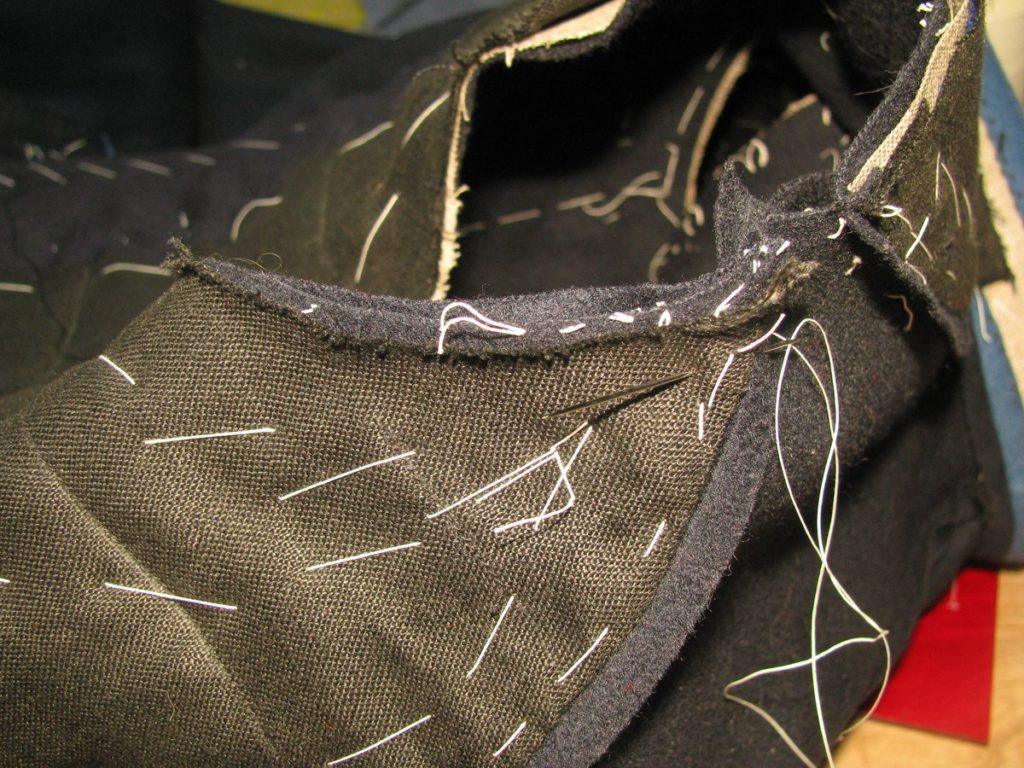
Directly at the bottom of the armscye, gather in a very slight amount of sleeve as you baste, about 1⁄4 inch total.
Continue basting until you get to the other seam, where the shirring stitches began.
Now pull each end of the shirring stitches, grasping all three threads at the same time, gathering the sleeve until it fits nicely into the coat. Distribute the fullness so that there are no large folds in the fabric. This step can be fiddly and take a while, but have patience and you will get it. It’s worth the extra time.
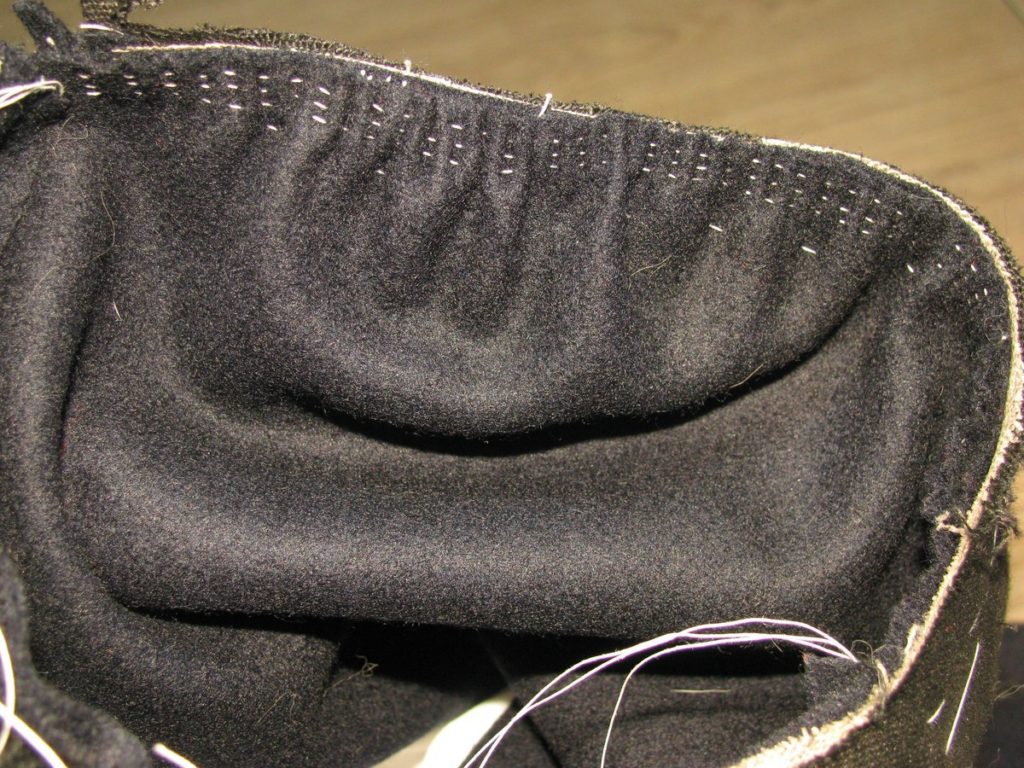
When you are happy with the distribution, baste across the top of the sleevehead, fine tuning the fullness as you go. When you reach the other side, where you began basting, stop for a moment, but
don’t cut the thread. Turn the coat to the right side, and check the hang of the sleeve, and that the fullness is distributed nicely. Also check that the rear sleeve seam is centered on the little section of the back piece. This is the time to make any changes necessary.
When satisfied, go back to the inside, and baste around the armscye again, this time alternating your stitches with the previous stitches. This will lock the sleeve in place, while at the same time making the basting stitches easier to remove later.
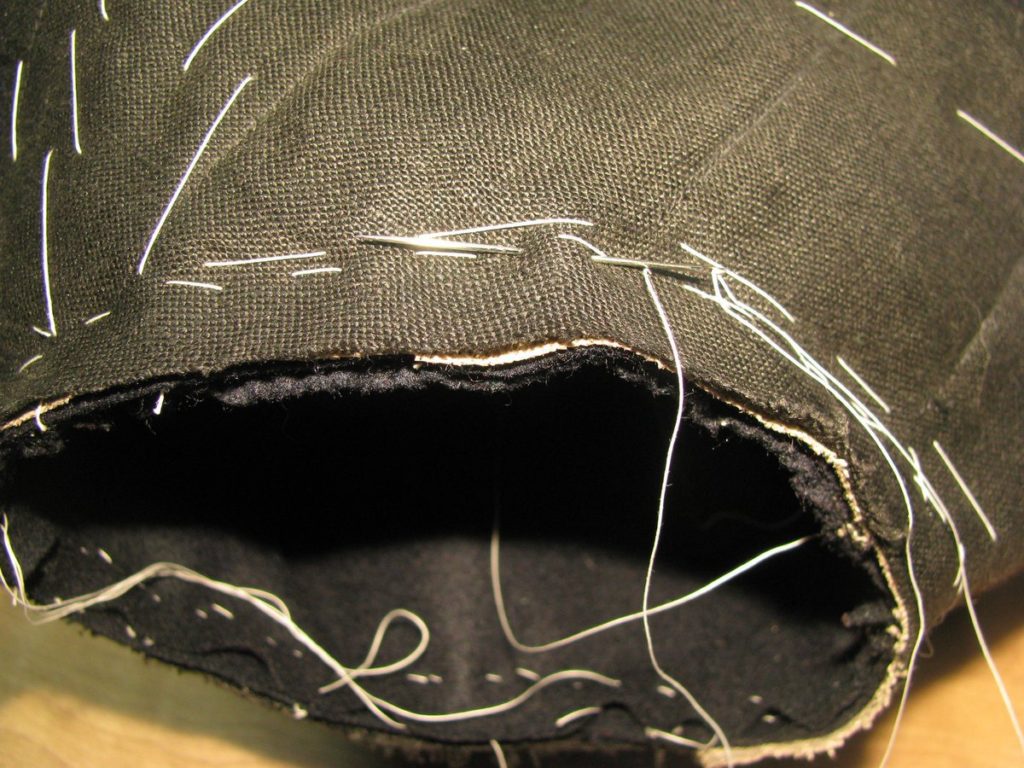
Place the top of the sleeve head onto a pressing surface so that the
gathered section is visible, and gently shrink away the fullness from the gathering stitches. Press no more than 3⁄4 inch into the sleeve, or you’ll end up shrinking all of the fullness away, and your work will be for nothing.
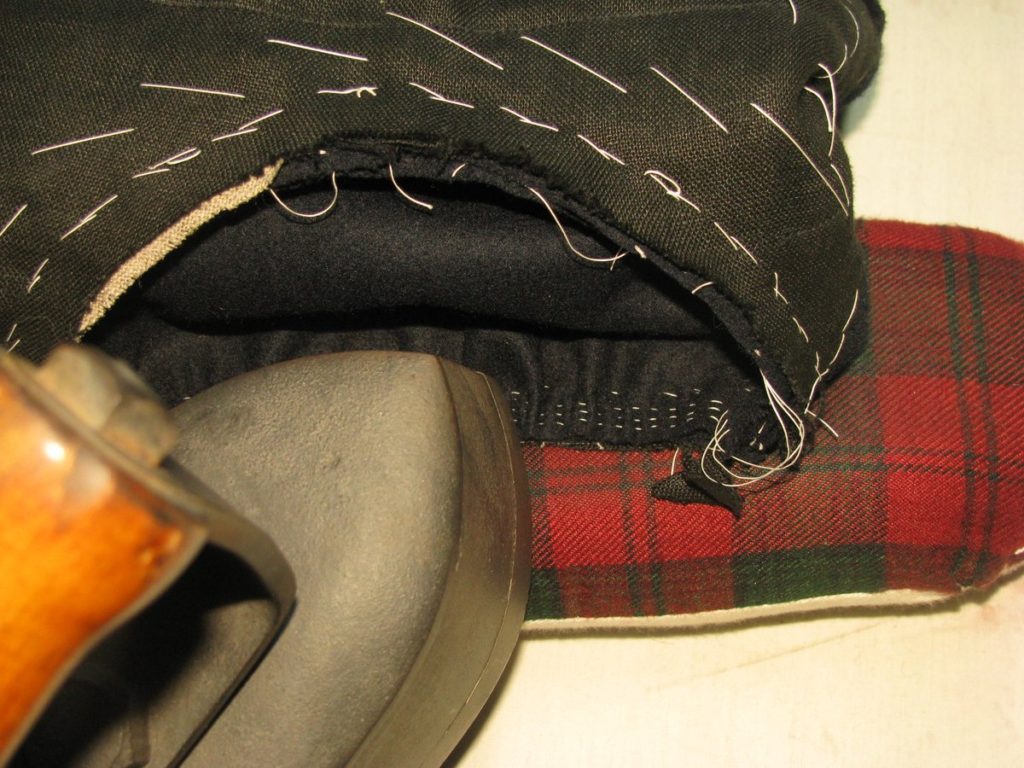
After pressing you should have a fairly smooth sleevehead, with some fullness visible below the top edge.
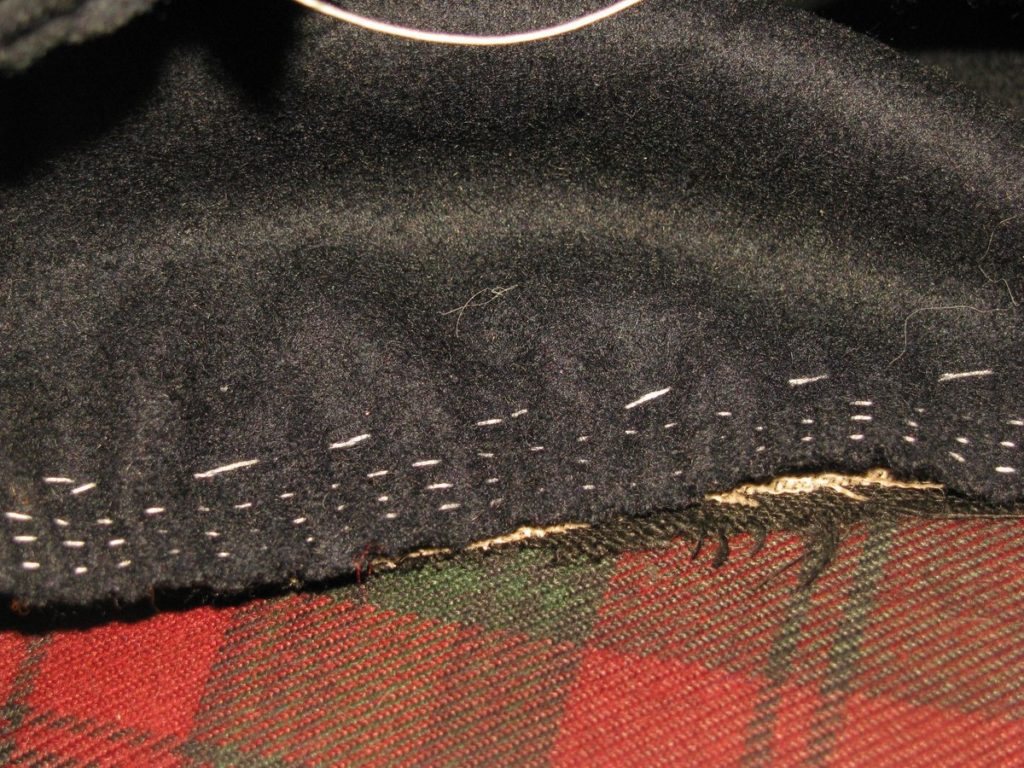
Place the sleeve onto the sewing machine, with the coat inside out, and sew the sleeve on with a quarter inch seam allowance. This can be done with a backstitch if preferred, of course.
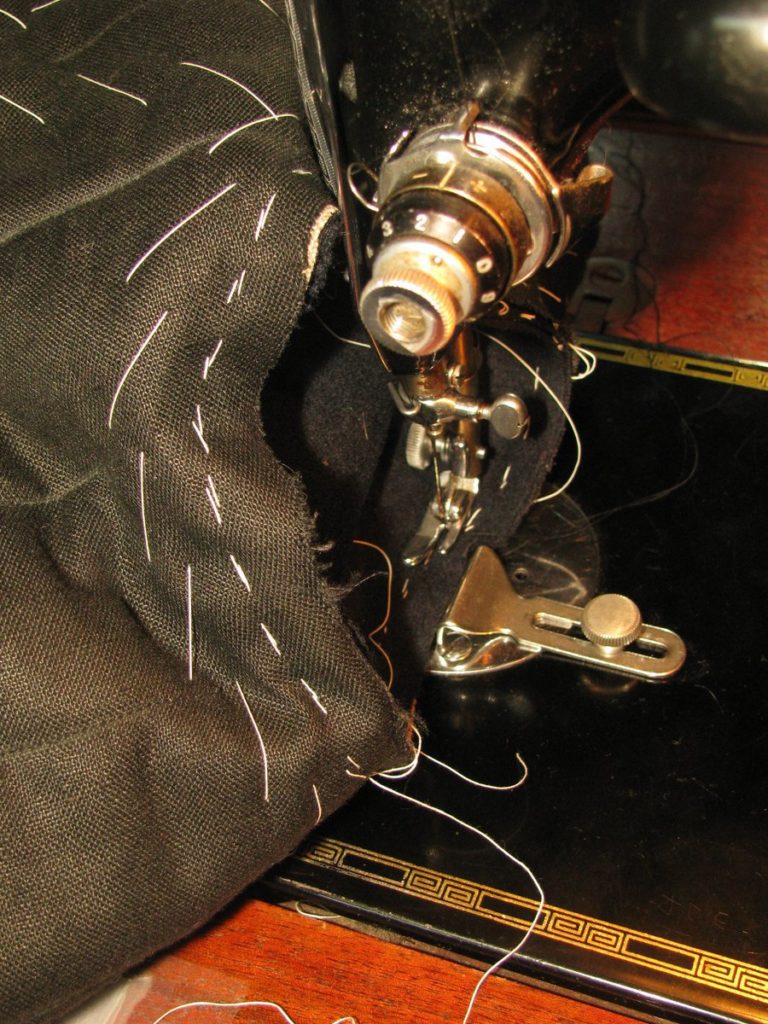
After sewing, remove all basting stitches from the sleeve area. Some of them may get caught in the stitching, but by picking at them carefully, they’ll all come out eventually. Turn the coat to the right side and check your work. The sleeve should be smooth on top, and slightly raised above the level of the shoulder.

